The Svalbard Line – North
Bergen – Longyearbyen
All-inclusive Arctic cruise north to Svalbard, sailing fjords under the Midnight Sun

1 / 13
From Bergen to Longyearbyen, sail Norway’s coast on a week-long cruise into the heart of the Arctic
Enjoy all-inclusive comfort as you witness fjords, visit Tromsø, stand at the North Cape and sail past the remote cliffs of Bjørnøya. Each day reveals wilder landscapes and brighter skies, until you arrive in Longyearbyen, the gateway to Svalbard’s wildlife, history and dreamy landscapes.
All-inclusive Signature voyage
Enjoy longer stays in port, and superb dining in multiple restaurants with unlimited selected drinks
Explore Svalbard’s frontier capital
Discover Longyearbyen’s frontier culture, Arctic wildlife and spectacular landscapes
Visit Norway’s oldest fishing village
In magical Træna to enjoy an Arctic dip and a warm welcome from the locals
Bask in endless daylight under the Midnight Sun
Experience 24-hour sunlight in the Arctic Circle, from mid-May to late July
Get to know Tromsø, the Arctic capital
A history-packed city filled with museums and restaurants, and home to the Arctic Cathedral
pp
All meals & unlimited selected drinks included
Lowest rate - Sailing September 2026
8 days
7 Stops
16 Departures


All-inclusive food and drink to our top-handpicked destinations
Itinerary
Show full itinerary
Sailing The Svalbard Line
Bergen
Read more
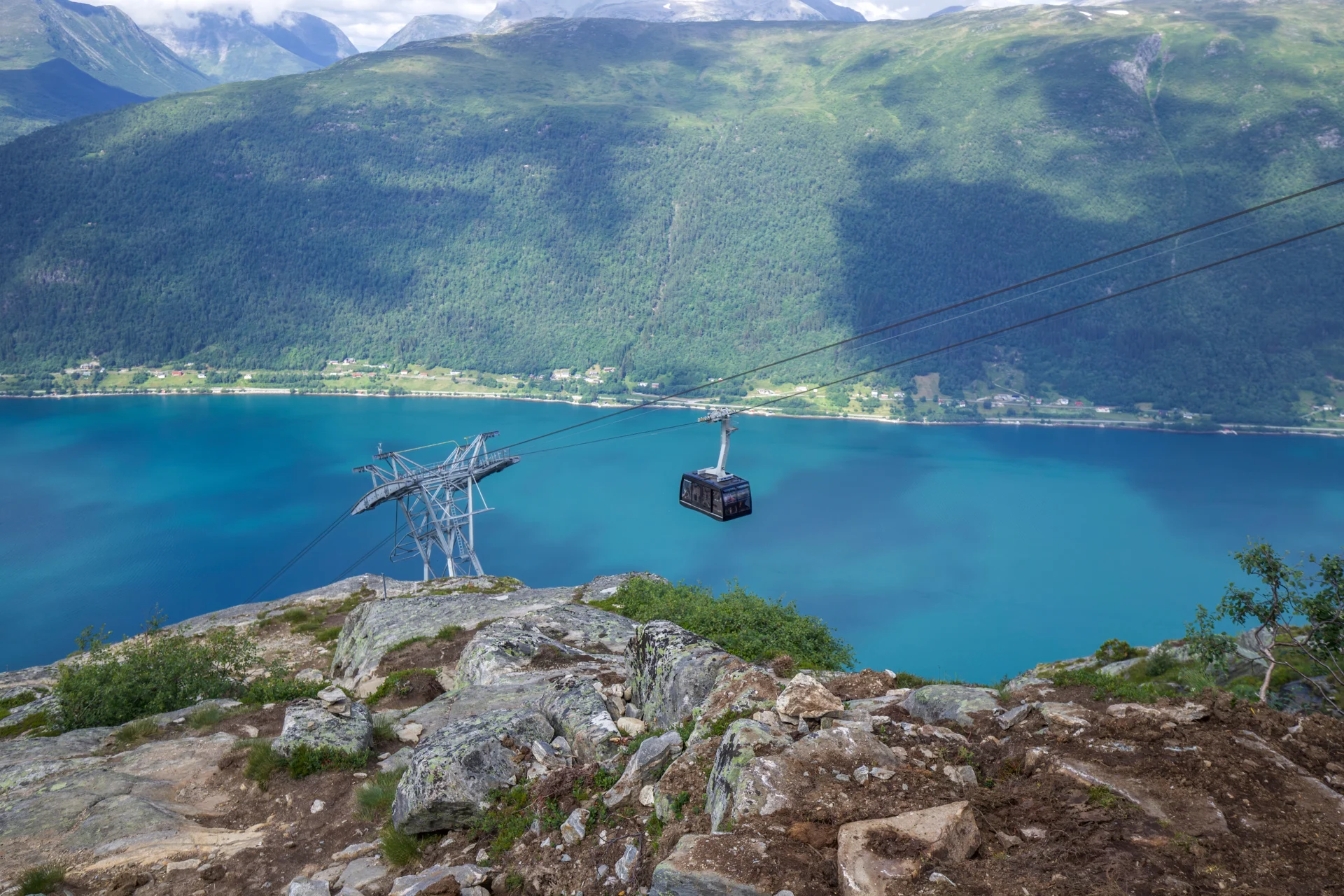
Alpine village by the fjord
Åndalsnes
Read more

Norway’s oldest fishing community
Træna
Read more
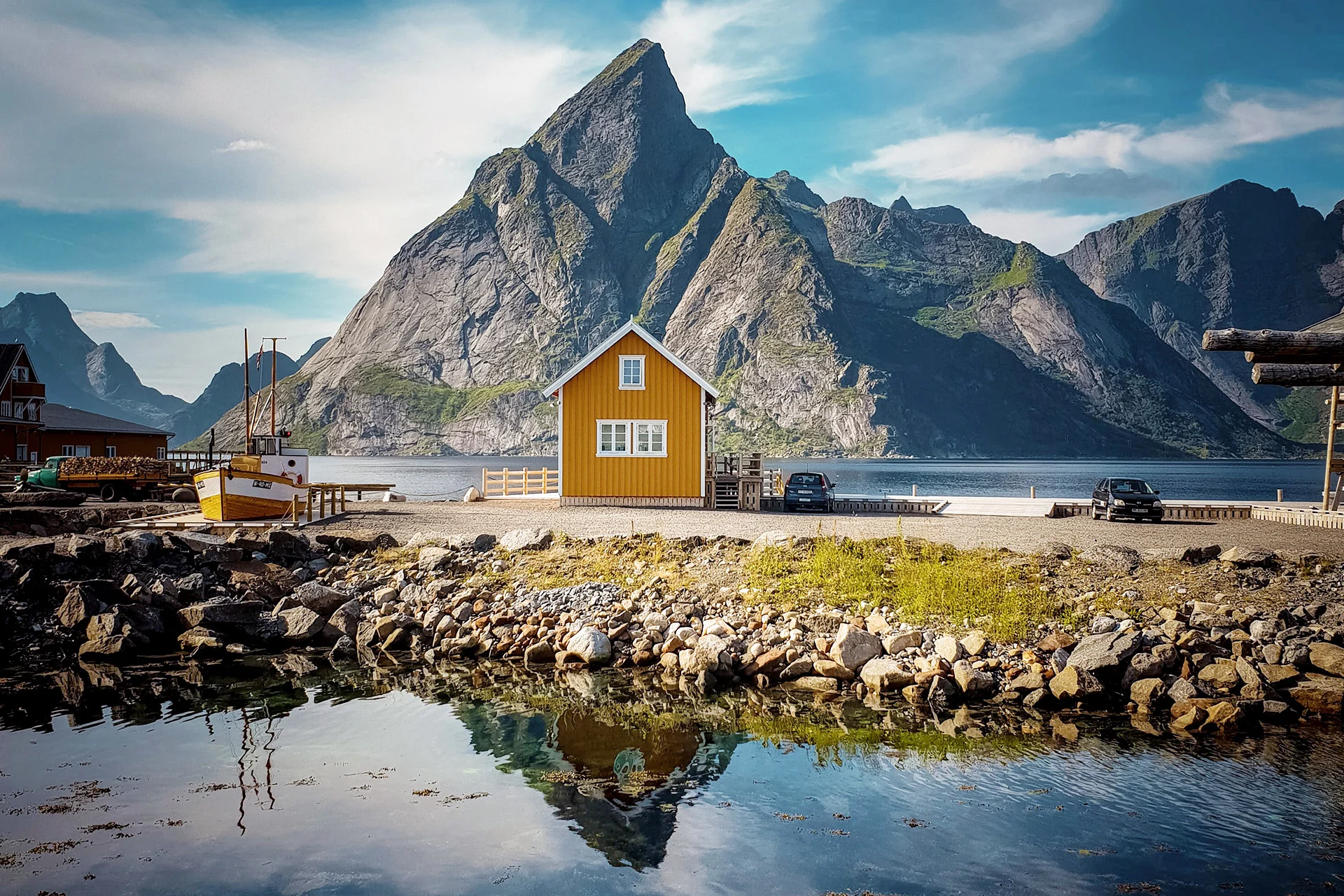
The Tip of Lofoten
Reine
Read more
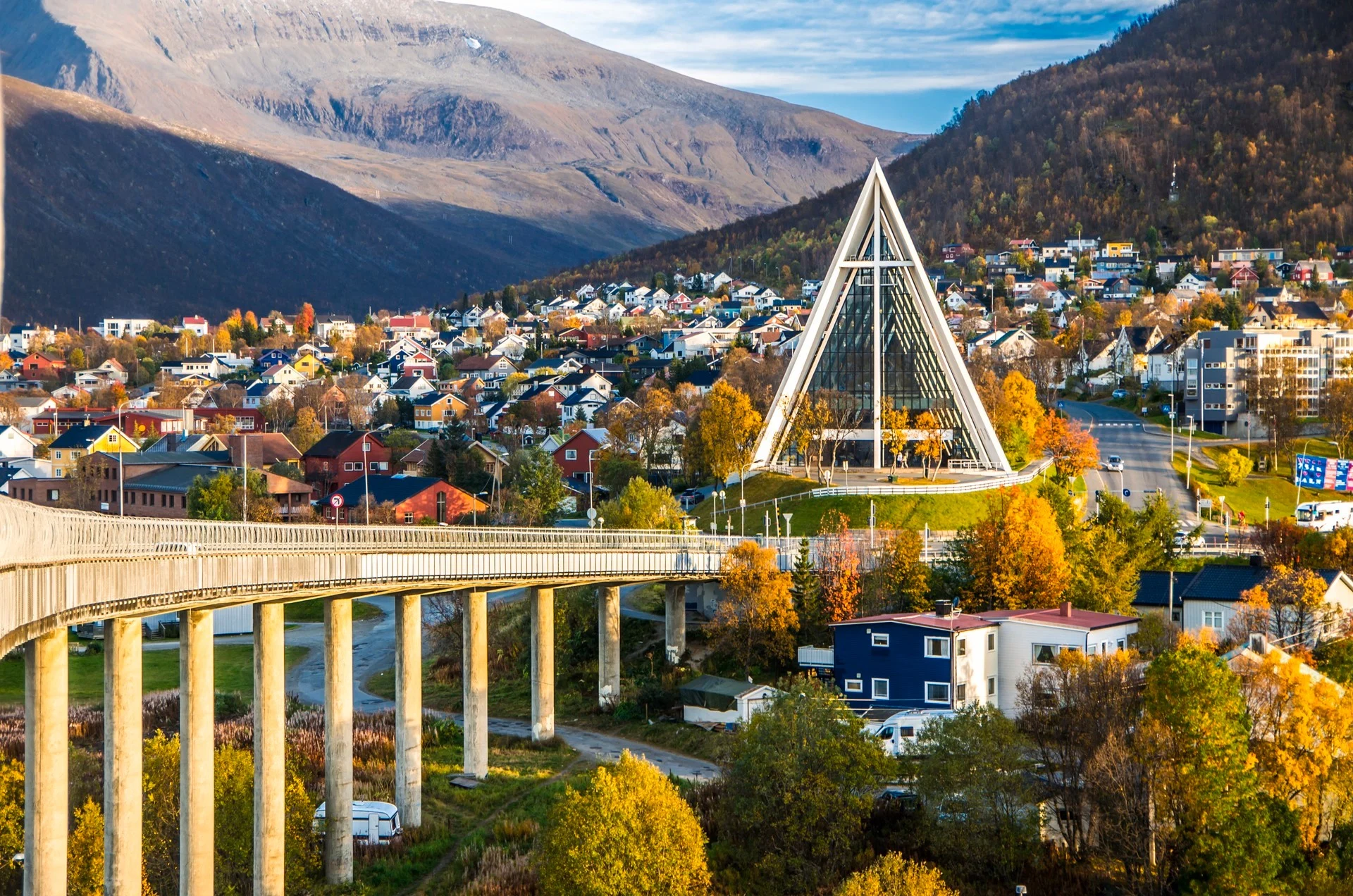
Gateway to the Arctic
Tromsø
Read more

At the top of Europe
Honningsvåg
Read more

Towards the Arctic frontier
Read more

Arrive at the edge of the world
Longyearbyen
Read more

Sailing The Svalbard Line
- Port: Bergen
- Day of voyage: 1
Details
Welcome to Bergen! Your voyage begins in this beautiful city on the west coast of Norway. What began as a small village was developed by King Olav Kyree in 1070 AD and is now Norway’s second largest city. The majestic peaks that famously surround the city give Bergen its nickname, ‘The City of Seven Mountains’.
Nestled in Bergen’s centre is Vågen Bay, the historic core of the city, and home to the UNESCO-listed Bryggen quarter made up of charming cobblestone streets and local boutique shops. Across from Bryggen, you’ll find the fish market, which cooks up fresh and delicious seafood dishes to feast on.
Before you board, visit our comfortable guest lounge at the Bergen Terminal. Here, you can talk to staff about securing a spot on any optional excursions still available.
Once we’ve welcomed you aboard, you’ll meet your ship’s Expedition Team, who will be your hosts and guides to the Norwegian coastline and Svalbard. Get acquainted with your shipmates and take some time to get comfortable in your new home-away-from-home.
Enjoy your first meal aboard the ship, and watch the row of colourful buildings on the seafront get smaller behind you as you sail into the Norwegian Sea.
Select the day

Alpine village by the fjord
- Port: Åndalsnes
- Day of voyage: 2
Details
Located along the Isfjord, Åndalsnes is a picturesque coastal town, home to about 2,000 people.
The literal highlights of Åndalsnes are the mountains that tower over the town. Experience the Norwegian concept of friluftsliv – a love of the outdoors – through a variety of activities, such as hiking to Rampestreken viewpoint.
For an easier way to take in the sights, sit back for a relaxing ride on the Romsdal Gondola or travel the winding Trollstigen Pass by bus. Whichever activities you choose, this day will bring you the best views of the Isfjord, Romsdalsfjord, and surrounding peaks.
Available excursions

Åndalsnes Town Walk and Romsdal Gondola
Åndalsnes 2h 30min
Read more
Available
all seasons
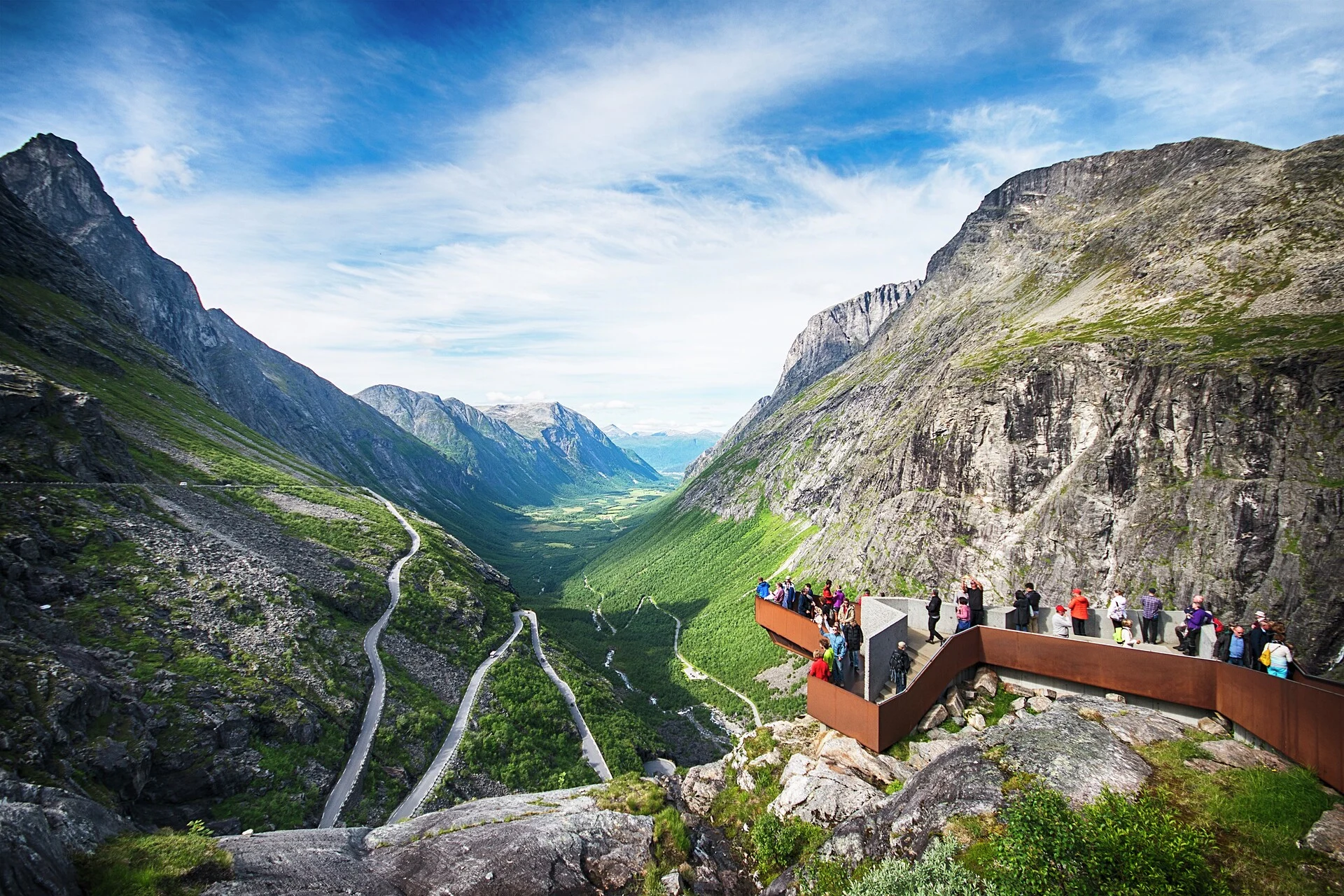
Hairpin Bends & Soaring Mountains - Trollstigen Scenic Bus Tour
Åndalsnes 3h
Read more
Available
Jun - Aug + Sep - Oct
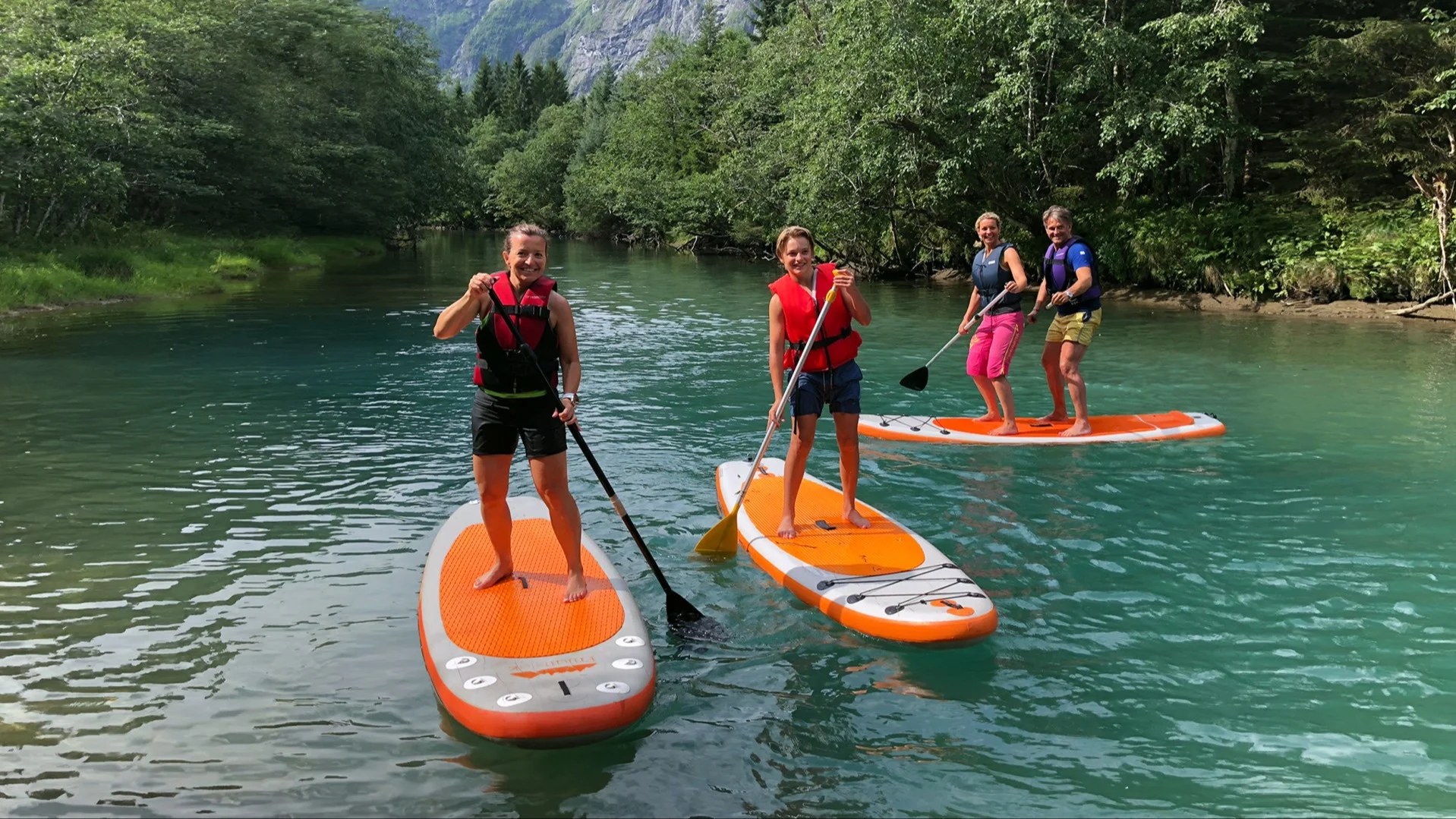
Stand-Up Paddle Board in Åndalsnes
Åndalsnes 4h
Read more
Available
Jun - Aug

The Golden Train - Summer
Åndalsnes 2h 30min
Read more
Available
all seasons
Select the day

Norway’s oldest fishing community
- Port: Træna
- Day of voyage: 3
Details
Træna is an archipelago that sits along the Helgeland coast at the edge of the Arctic Circle, 33 nautical miles northwest of the mainland. Made up of around 500 islands, islets and skerries, only four are inhabited year-round.
Today’s selection of activities and optional excursions takes you to the heart of the archipelago’s sights and traditions. The village will be open just for us, including the church, Petter Dass chapel and the local museum. Alternatively, you can join a hike, take a cultural walk, or immerse yourself in a sauna and refreshing dip in the Arctic Ocean on one of our optional excursions.
Back on board, we’ll cross the Arctic Circle as we continue heading north, commemorating the moment with a traditional and fun ceremony.
Available excursions
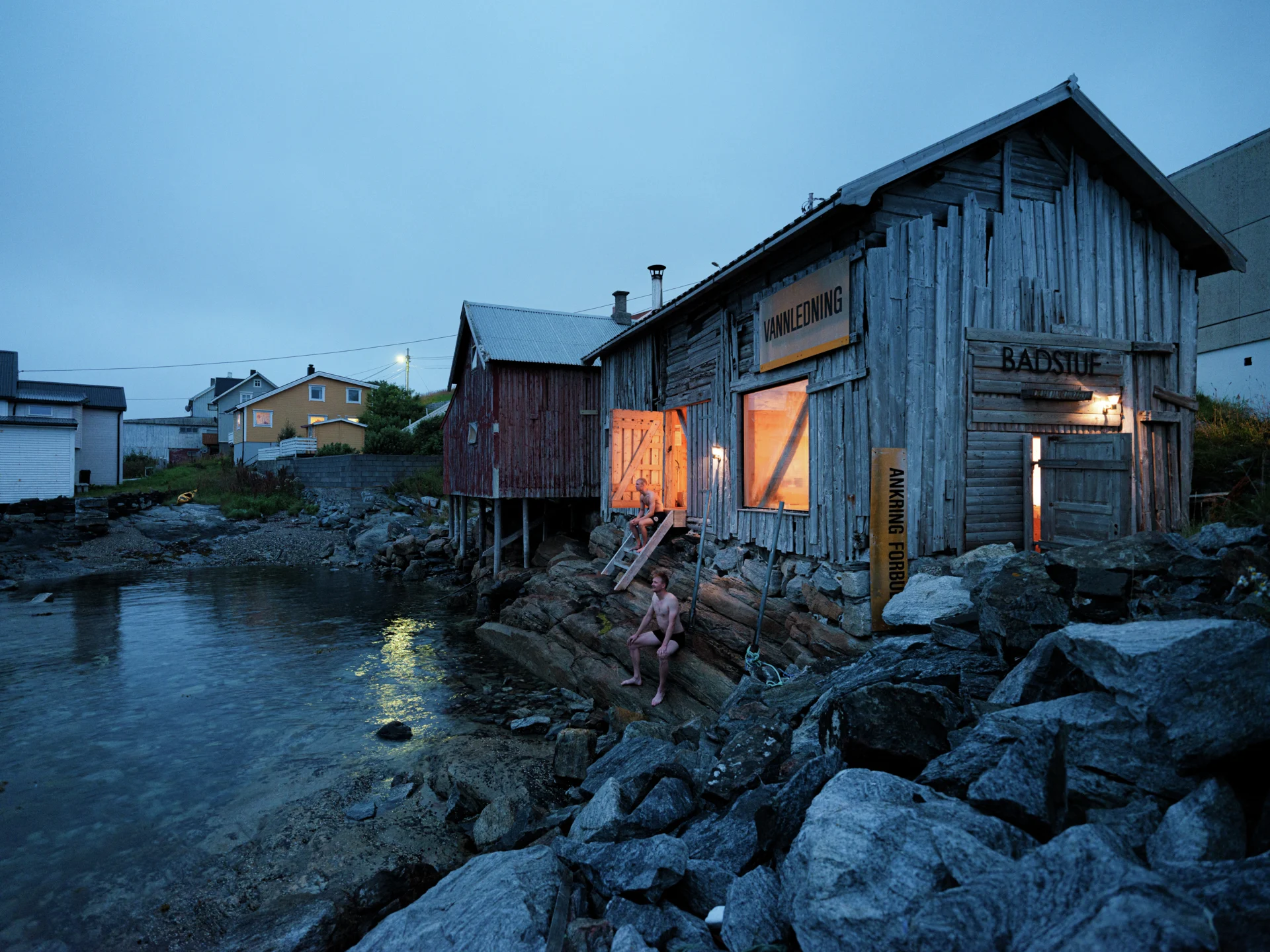
Arctic Dip – Sauna & Swim
Træna 1h 30min
Read more
Available
Apr - May + Jun - Aug + Sep - Oct
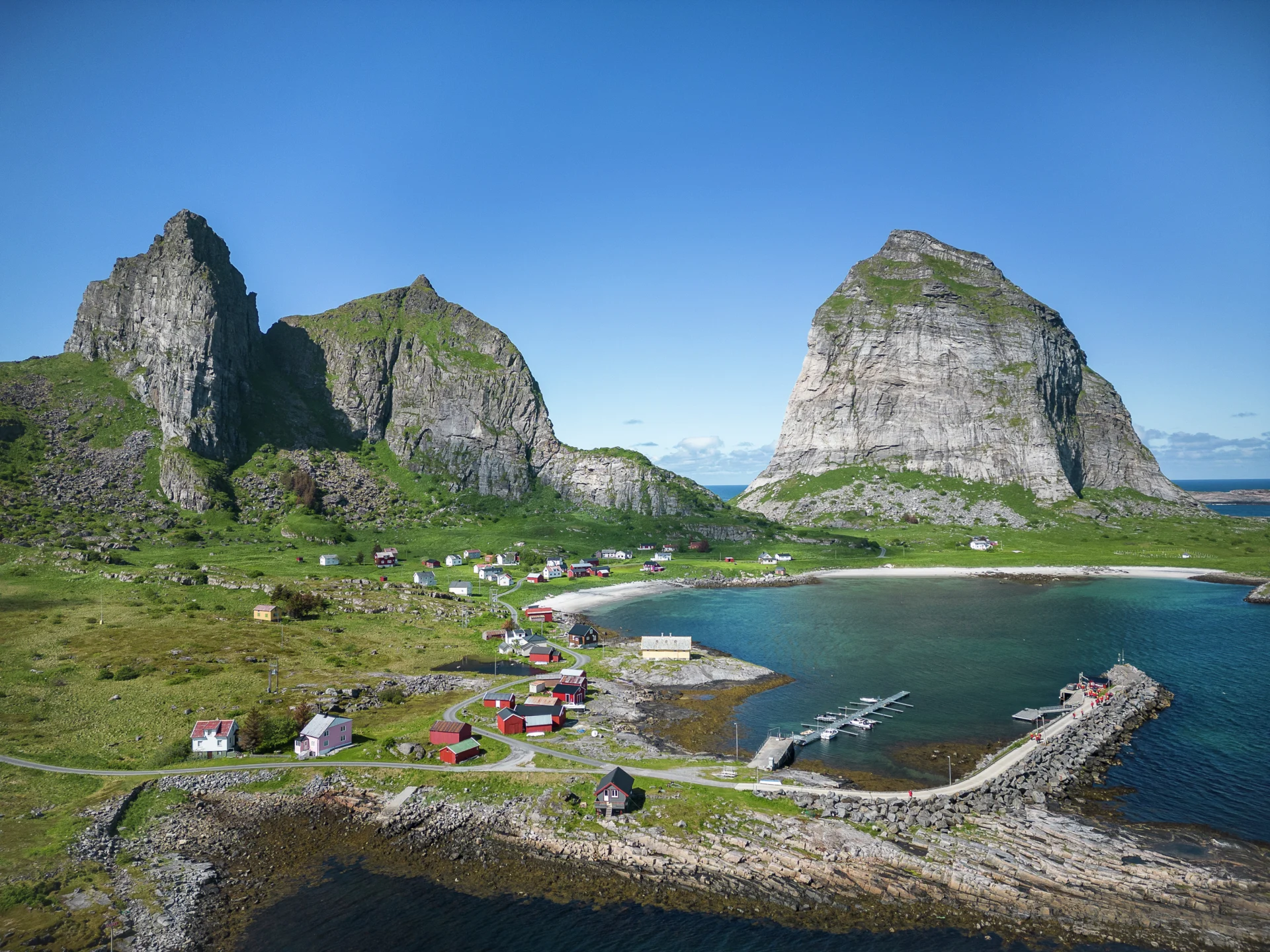
Træna Island Hopping
Træna 3h
Read more
Available
Apr - May + Jun - Aug + Sep - Oct
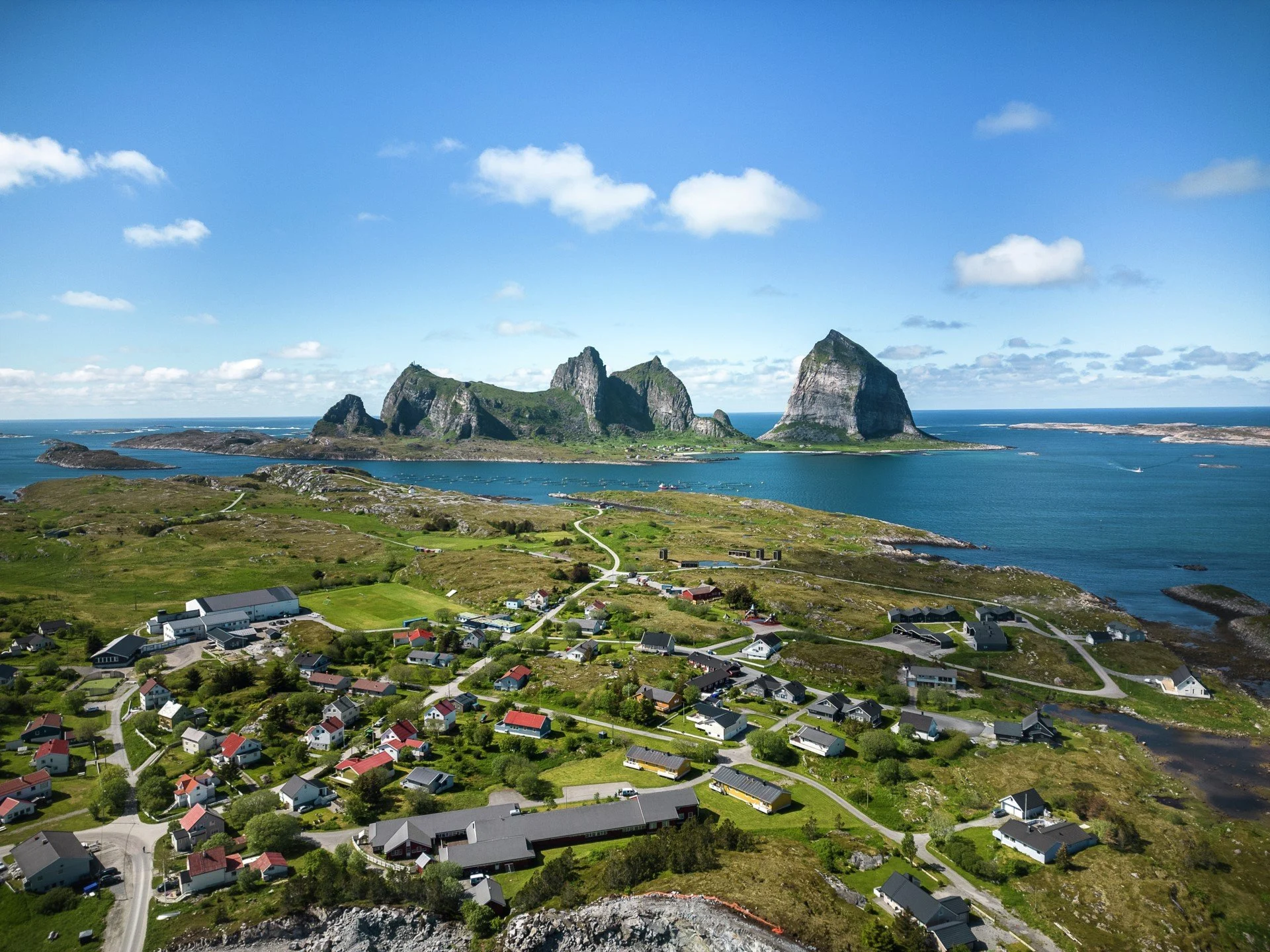
Træna Culture Walk – Poetry, Art, and Heritage
Træna 2h 30min
Read more
Available
Apr - May + Jun - Aug + Sep - Oct
Select the day

The Tip of Lofoten
- Port: Reine
- Day of voyage: 4
Details
Today, we explore the famed Lofoten islands. Watch for the steep mountains rising from the sea as we approach from the south in the morning.
We dock in Reine, an important – and picture-perfect – fishing village since 1743. This is one of the most photographed landscapes in all of Norway, where red-painted rorbuer cling to a string of islands beneath sharp mountain ranges reflected in the waters below.
Not far to the south of Reine, at the western tip of the Lofoten archipelago, you’ll find Å, one of the best-preserved traditional fishing villages in Norway. You can visit it on an optional excursion.
At the heart of this tiny village is the Norwegian Fishing Village Museum, which covers the importance and development of fishing in Lofoten over the last 250 years.
Available excursions
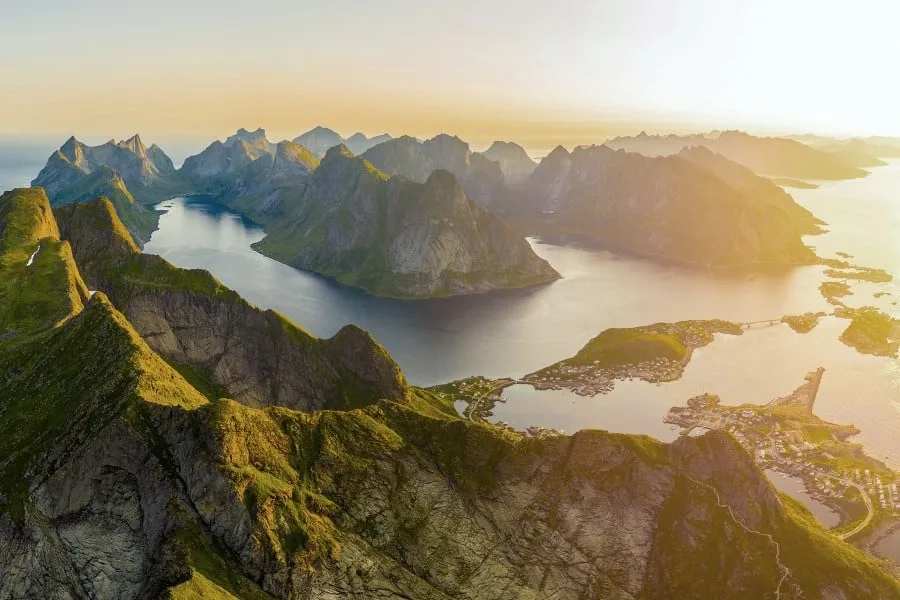
Reine & Lofoten Scenery
Reine 5h
Read more
Available
Jun - Aug + Sep - Oct + Apr - May

Kayaking in Reine
Reine 3h
Read more
Available
all seasons
Select the day

Gateway to the Arctic
- Port: Tromsø
- Day of voyage: 5
Details
Tromsø is northern Norway’s urban Arctic hotspot, boasting impressive architecture, hip restaurants, and the world’s northernmost university.
Calling into Tromsø on the way to or from Svalbard follows in the footsteps of history. Most explorers and sailors on Arctic expeditions would embark from or return to the city. We aim to dock here in the morning, giving you a whole day to explore this historic Arctic city and its surroundings.
Take your pick from a number of optional excursions. Learn more about the culture and polar history of Tromsø on a city walk, or take a scenic bus tour. You can also visit the striking Arctic Cathedral, which has an impressively large multi-coloured stained-glass window. Or ride the Fjellheisen Cable Car up Storsteinen Mountain for exceptionally beautiful views of the city, mountains, and fjords.
Available excursions

Tromsø, The Arctic Capital
Tromsø 3h 30min
Read more
Available
all seasons
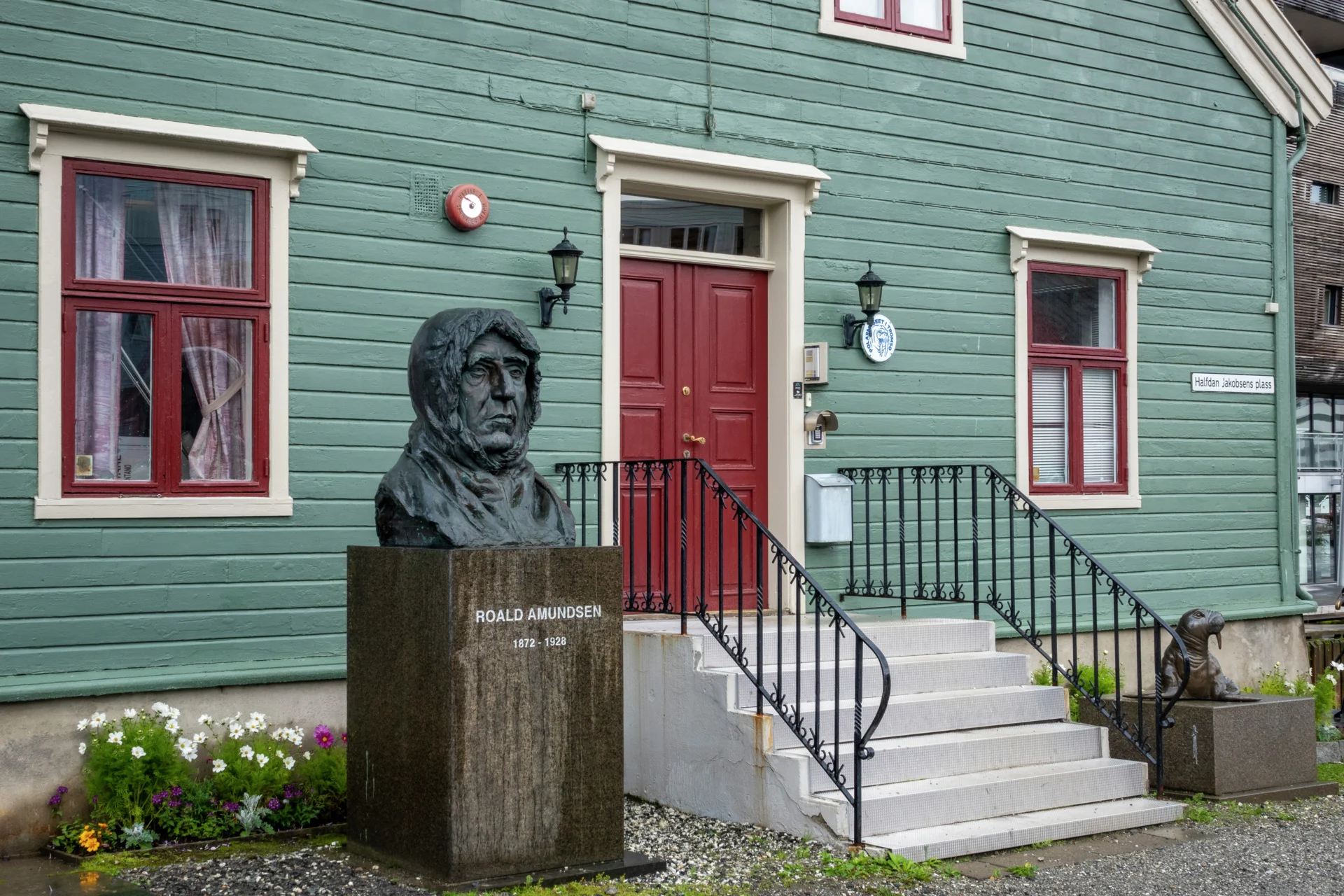
Tromsø On Foot – The City & Its Polar History
Tromsø 3h 30min
Read more
Available
Apr - May + Jun - Aug + Sep - Oct

Explore Tromsø by E-bike
Tromsø 3h
Read more
Available
Apr - May + Jun - Aug + Sep - Oct
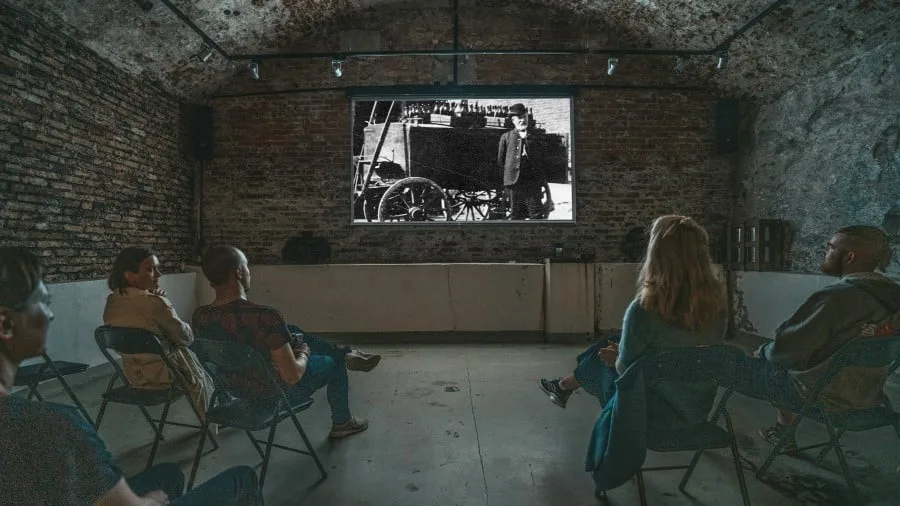
The Northernmost Brewery
Tromsø 1h 30min
Read more
Available
Apr - May + Jun - Aug + Sep - Oct
Select the day

At the top of Europe
- Port: Honningsvåg
- Day of voyage: 6
Details
Around mid-morning, we arrive at Honningsvåg, the northernmost city in mainland Norway.
You have several optional excursions to pick from here. These could include taking a bus or riding a quad to the North Cape, a hike with your Expedition Team.
Honningsvåg is also the gateway to the North Cape, the northernmost point of Europe. The plateau stands 307 metres above the sea, and is just over 1,600 km south of the geographical North Pole. Take a moment to gaze out across the sea from a top the soaring cliffs, watching the waves crash against the rocks below.
Sailing away from Honningsvåg, we’ll enjoy dramatic views of the plateau from the sea. The ship will head further into the Barents Sea, leaving mainland Norway’s coast far behind us.
Available excursions

The North Cape
Honningsvåg 3h
Read more
Available
all seasons
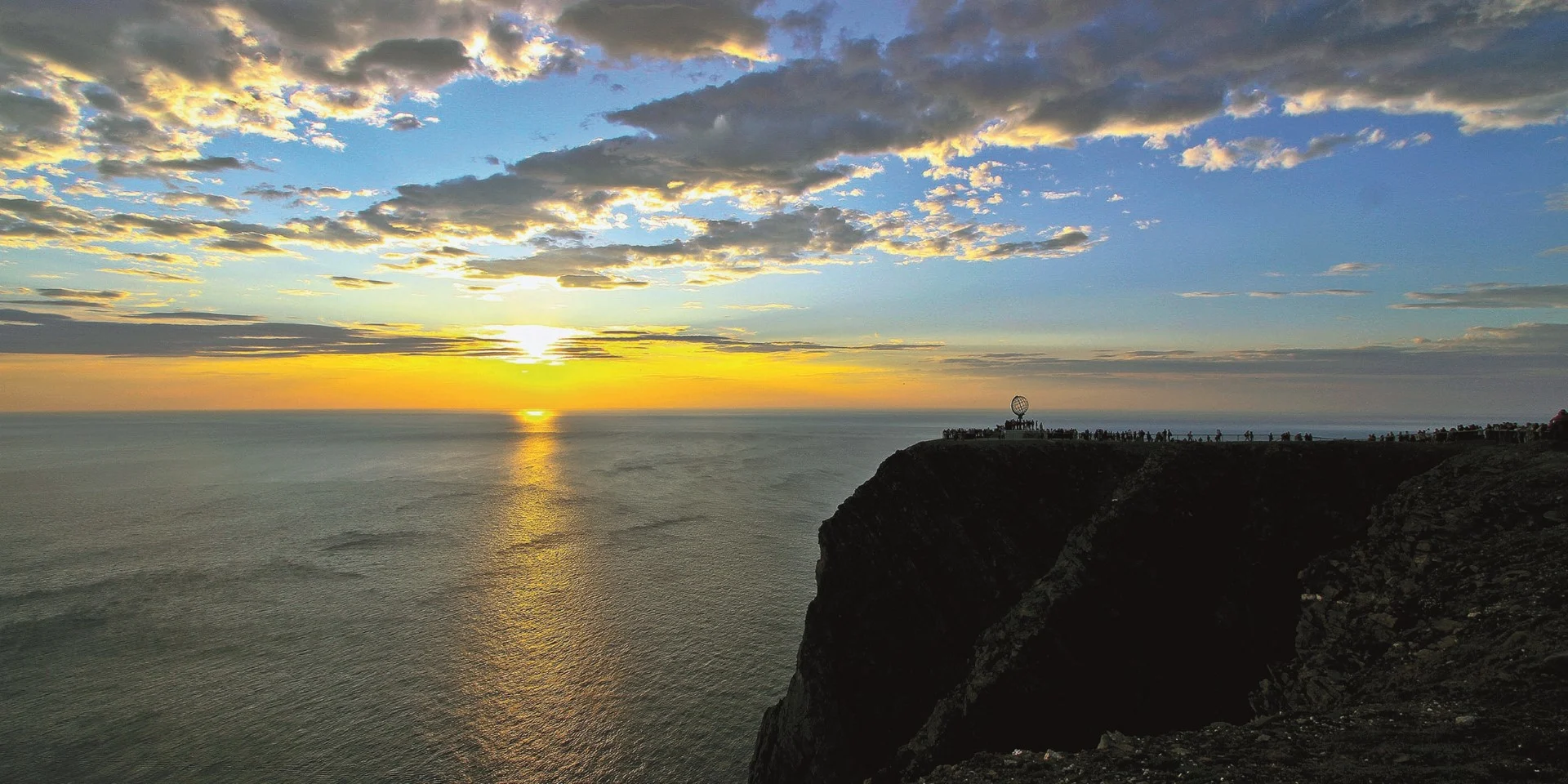
North Cape and King Crab Experience
Honningsvåg 5h
Read more
Available
all seasons
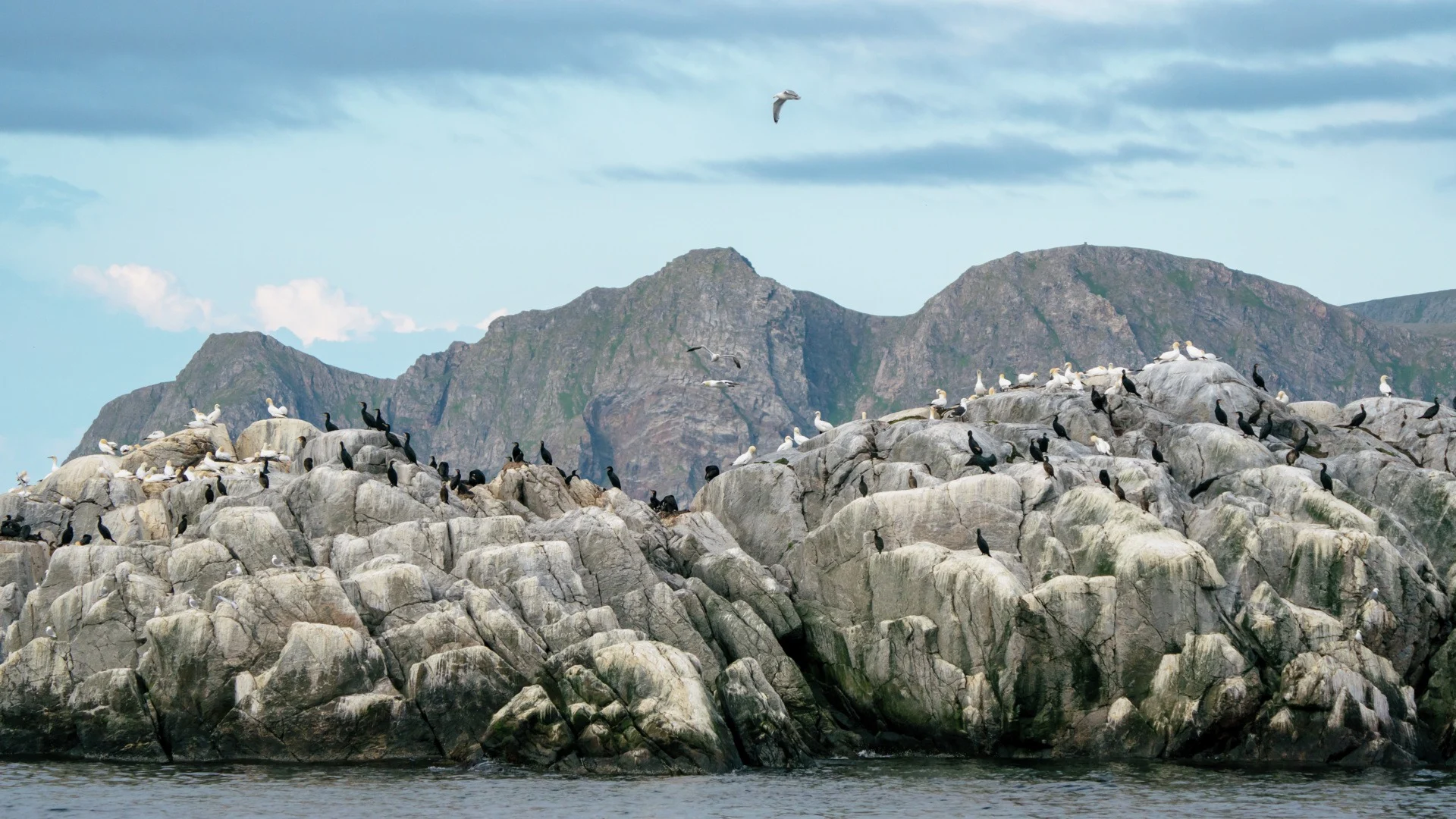
Birdwatching Safari & The North Cape
Honningsvåg 5h 30min
Read more
Available
Apr - May + Jun - Aug

Quad Biking to North Cape
Honningsvåg 4h 30min
Read more
Available
Apr - May + Jun - Aug + Sep - Oct
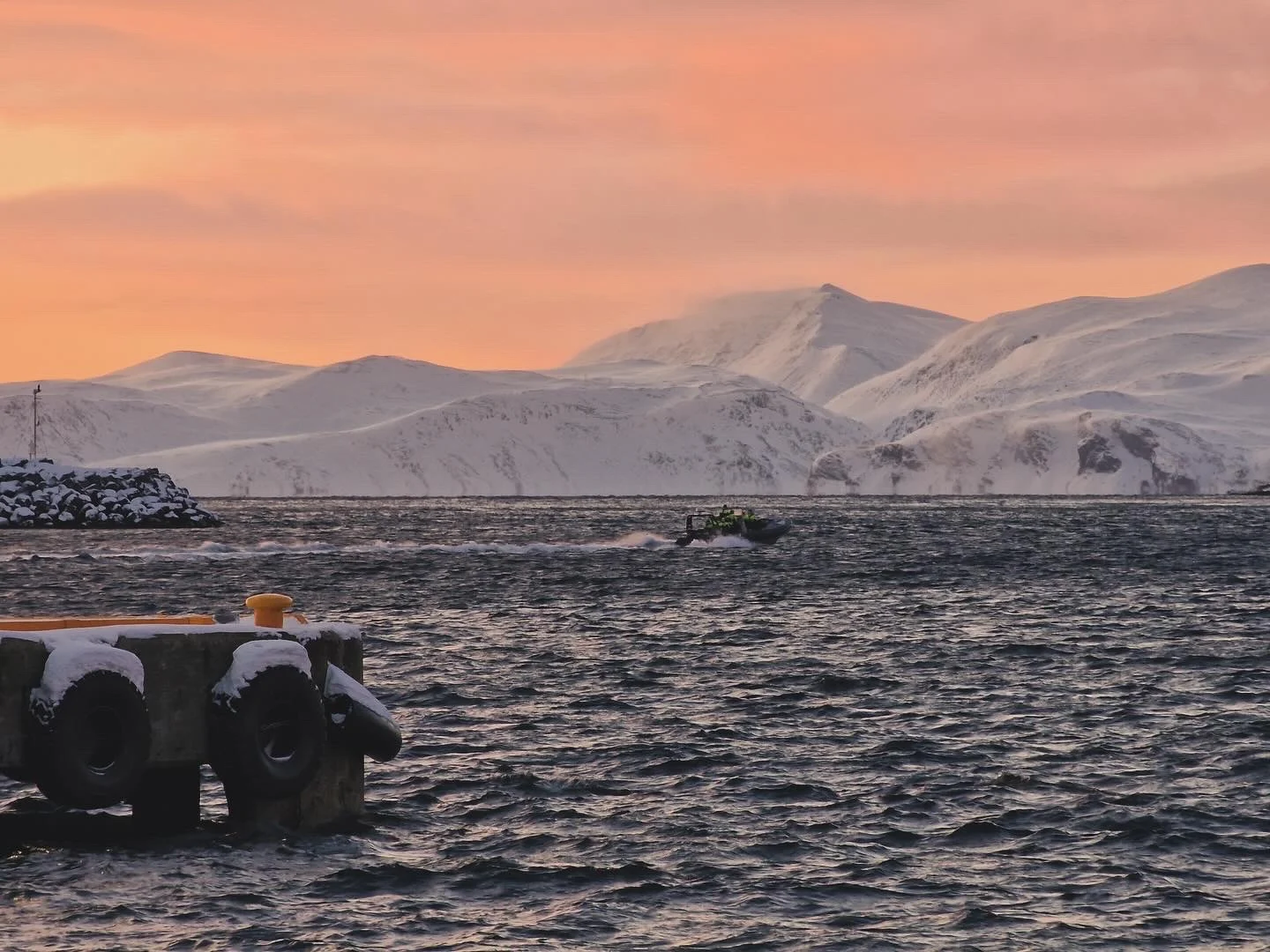
RIB & King Crab Experience
Honningsvåg 3h 30min
Read more
Available
Jun - Aug + Sep - Oct
Select the day

Towards the Arctic frontier
- Port:
- Day of voyage: 7
Details
Today is a day spent far from land as we cross the Barents Sea heading towards the remote wilderness of Svalbard. It really does feel like we're leaving civilisation far behind as we sail towards the top of the world. There will be a lecture about Svalbard, and the theme of the day is Arctic desert. Out on deck, our talented chefs will prepare another special tasting for you to enjoy - and listen out for any points of interest from the Expedition Team.
It's a day for you to relax and enjoy the ship's facilities, and also to look ahead and learn about our next destination. At some point today we will sail past the lonely and rugged island of Bjornøya - 'Bear Island' - although no bears live there today. Why not get a cup of tea or coffee and seat yourself somewhere comfortable and read up about the nature and history of the Arctic frontier. In the afternoon there will be a briefing about the special rules that we all must follow to protect the delicate local ecology when we reach Ny-Ålesund.
Remember, there's plenty to do on board, so maybe now's the ideal time to take that sauna, work up a sweat in the fitness room, or browse the library. You might want to sort through all the photos you've taken so far, and if there are any you're particularly proud of, don't forget to share with your fellow guests using the Cameralla app so we can all see them!
Select the day

Arrive at the edge of the world
- Port: Longyearbyen
- Day of voyage: 8
Details
On the last day of your voyage, we arrive at the Svalbard archipelago and make our way up to Spitsbergen, the largest of the three main islands. Magnificent brown and green mountains rise and ripple up from the High Arctic tundra while rivers of snow-melt trickle through the valley plains, glistening under the summer sun.
Take a moment to just be here, now, in Svalbard. You’re at a latitude more than 78°N and under 1,500 kilometres from the North Pole itself. The air of this Arctic desert is fresh and pure, and temperatures in summer average between zero and eight degrees Celsius thanks to a warm northern branch of the Gulf Stream.
In early afternoon, we find Longyearbyen nestled on the banks of Isfjord. It’s time to disembark the ship, but before you travel home, give yourself plenty of time to explore Longyearbyen. or join excursions. A former coal mining colony, Longyearbyen is the biggest settlement in Svalbard and a hub for adventure travellers, as well as scientists and engineers attached to local research projects, like the famous Global Seed Vault.
You’ve travelled as part of this historic, iconic voyage to pieces of paradise along the Norwegian coast you won’t soon forget. We hope you’ll cherish each of the memories you’ve made on The Svalbard Line. Come sail with us again soon, on another iconic voyage of our spectacular home: the Norwegian coast.
Select the day
The route
You can drag or zoom in on the map to explore the route in more detail.
Optional excursions and extensions(18)
Choose these and many more when booking your voyage online, or take your time to decide and add them later in MyBooking.

Åndalsnes Town Walk and Romsdal Gondola
Åndalsnes 2h 30min
Read more
Available
all seasons

Hairpin Bends & Soaring Mountains - Trollstigen Scenic Bus Tour
Åndalsnes 3h
Read more
Available
Jun - Aug + Sep - Oct

Stand-Up Paddle Board in Åndalsnes
Åndalsnes 4h
Read more
Available
Jun - Aug

The Golden Train - Summer
Åndalsnes 2h 30min
Read more
Available
all seasons

Arctic Dip – Sauna & Swim
Træna 1h 30min
Read more
Available
Apr - May + Jun - Aug + Sep - Oct

Træna Island Hopping
Træna 3h
Read more
Available
Apr - May + Jun - Aug + Sep - Oct

Træna Culture Walk – Poetry, Art, and Heritage
Træna 2h 30min
Read more
Available
Apr - May + Jun - Aug + Sep - Oct

Reine & Lofoten Scenery
Reine 5h
Read more
Available
Jun - Aug + Sep - Oct + Apr - May

Kayaking in Reine
Reine 3h
Read more
Available
all seasons

Tromsø, The Arctic Capital
Tromsø 3h 30min
Read more
Available
all seasons

Tromsø On Foot – The City & Its Polar History
Tromsø 3h 30min
Read more
Available
Apr - May + Jun - Aug + Sep - Oct

Explore Tromsø by E-bike
Tromsø 3h
Read more
Available
Apr - May + Jun - Aug + Sep - Oct

The Northernmost Brewery
Tromsø 1h 30min
Read more
Available
Apr - May + Jun - Aug + Sep - Oct

The North Cape
Honningsvåg 3h
Read more
Available
all seasons

North Cape and King Crab Experience
Honningsvåg 5h
Read more
Available
all seasons

Birdwatching Safari & The North Cape
Honningsvåg 5h 30min
Read more
Available
Apr - May + Jun - Aug

Quad Biking to North Cape
Honningsvåg 4h 30min
Read more
Available
Apr - May + Jun - Aug + Sep - Oct

RIB & King Crab Experience
Honningsvåg 3h 30min
Read more
Available
Jun - Aug + Sep - Oct

Åndalsnes Town Walk and Romsdal Gondola
- Port: Åndalsnes
- Available: all seasons
- Duration: 2h 30min
- Difficulty level: Level 2: Moderate - some mobility needed
- Price: From 277 AUD
- Booking code: HRS-AND1
Best things about this excursion
Enjoy a walking tour of this quaint town, with a visit to the world’s only Train Chapel
Ride to 2,320ft (708 metres) above sea level in Norway’s first gondola built on sustainable principles
Soak up the breathtaking panoramic views across the majestic peaks of the Romsdal Mountains
Explore the top of the mountain on a guided walk and visit the mountaintop restaurant
Practical information
Languages: English and Norwegian
Wheelchair accessible: Yes, but note that the accessible route is slightly shorter on the mountain.
About this activity
Our tour starts as soon as you step on to the pier, where we’ll meet our local guide and begin our journey through the town’s key landmarks. One of the highlights is the remarkable Train Chapel, a decommissioned state railway carriage that was converted into a small chapel in 2003. This is the first of its kind Norway, if not the world.
After our walking tour, we’ll head to the Romsdal Gondola – Norway's longest and most sustainable cable car. It takes only 5 minutes for the gondola to cover the 5,510ft (1,679 metres) from fjord to the peaks of the Romsdal Mountains, but it’ll feel like we’re journeying into another world. The views along the way and from the top are spectacular.
On the mountaintop, at 2,320ft (708 metres) above sea level, we’ll scan the 360-degree views to see the unforgettable outline of Romsdalshorn (one of Norway’s most famous peaks), the pinnacle of Vengetindene, Åndalsnes town centre, and the surrounding lush valleys. It’s obvious why Åndalsnes is Norway’s mountaineering capital!
Then, we’ll explore the mountaintop on a 30-minute/1,640-ft (500-metre) guided walk and find out how the tough climate shapes the day-to-day lives of those who live here.
Before we catch the gondola back down, it’s time for a locally brewed coffee and sweet treat at Eggen Restaurant, on the mountain next to the Romsdalen Gondola station.
Combine with the Trollstigen bustour for more spectacular views.

Hairpin Bends & Soaring Mountains - Trollstigen Scenic Bus Tour
- Port: Åndalsnes
- Available: Jun - Aug + Sep - Oct
- Duration: 3h
- Difficulty level: Level 1: Easy - suitable for most people
- Price: From 308 AUD
- Booking code: HRS-AND2
Best things about this excursion
Drive the world-famous series of 11 hairpin bends, known as the Trollstigen Road (Path of the Trolls)
Admire soaring mountain peaks, unspoilt valleys and some of Norway’s most iconic sights
Pause at viewpoints to photograph Europe’s highest vertical mountain wall, impressive mountains and a beautiful waterfall
About this activity
The village of Åndalsnes, Norway’s mountaineering capital, is our starting point. This area is home to one of Europe’s most beautiful train journeys and one of the world’s most scenic hikes, according to Lonely Planet, so prepare yourself for some spectacular scenery.
We’ll follow the Rauma River, surrounded by soaring mountains including the 5,000ft (1,500m) Mount Romsdalshorn on one side and 5,100ft (1,550m) Trolltindane on the other. Our first photostop takes in the towering Troll Wall.
Next, we cross the Sogge Bridge to the Isterdal Valley, lined by mountains bearing names such as The King, The Queen and The Bishop, and approach the famous hairpin bends that climb to the top of the Trollstigen Road.
We’ll stop to photograph Stigfossen Waterfall then drive up to Trollstigen. Take in the magnificent scenery from the comfort of your coach or join an optional walk to another viewpoint. We’ll slowly trace the Trollstigen bends before returning to our ship.
Excursion is subject to a minimum number of participants.

Stand-Up Paddle Board in Åndalsnes
- Port: Åndalsnes
- Available: Jun - Aug
- Duration: 4h
- Difficulty level: Level 3: Active - good mobility needed
- Price: From 277 AUD
- Booking code: HRS-AND3
Best things about this excursion
Get a unique perspective on the serene and beautiful nature of Åndalsnes
Relax and be close to nature as we drift along the river, powered only by our paddles
Feel dwarfed by the surrounding mountains
The small group size enhances the tranquil and exclusive feel of this tour
Practical information
Wear swimming clothes, and bring a towel and a change of clothes
Wetsuits and life jackets are provided
About this activity
Our adventures on the water carry us through the Istradalen valley. Most visitors to this breathtaking part of Norway drive the world-renowned hairpin bends of Trollstigen, also known as The Troll’s Road.
But we’ll experience the beauty from a completely different perspective.
Paddle along the emerald-green waters of the calm Istra River at the foot of Trollstigen. We’ll be in complete awe of the peaks that rise steeply all around us. Powered purely by our own paddles, we’ll float along the river with lush nature all around. There’s good reason why some call this river Norway’s answer to the Amazon!
Excursion is subject to a minimum number of participants.

The Golden Train - Summer
- Port: Åndalsnes
- Available: all seasons
- Duration: 2h 30min
- Difficulty level: Level 1: Easy - suitable for most people
- Price: From 184 AUD
- Booking code: HRS-AND4
Best things about this excursion
Marvel at some of Norway’s most spectacular scenery from the comfort of your seat
Get up close with iconic Norwegian landmarks such as Trollveggen and Kyllingbrua
Learn more about the history of this region
Practical information
Languages: English, German, and Norwegian.
Not wheelchair accessible, as there are some steps on to the train.
About this activity
Voted “Europe's most scenic train journey” by Lonely Planet, the Rauma Railway is renowned for its magnificent views of vertical mountain walls and emerald-green rivers.
The route winds past some true Norwegian icons, including the mighty Trollveggen, Europe’s highest perpendicular mountain wall, and Kyllingbrua, the country's most-photographed railway bridge. With such an incredible setting, it’s easy to see why movies like Mission: Impossible and Harry Potter and the Half-Blood Prince have been filmed here. And don’t worry about blurry photos – the train slows down as you pass these landmarks, making it easy for you to capture that million-dollar shot.
Along the way, you’ll hear tales of ancient trolls, rockfalls, and waterfalls, as well as the dramatic story of how the railway rescued the entire 50-ton Norwegian gold reserve in April 1940.
The group will be split in two: one half will take the train, and the other will enjoy a guided bus tour along a similar route. We’ll reconvene at Bjorli, a beautiful mountain village, where you’ll have the opportunity to explore and stretch your legs before the return leg to Åndalsnes. Those who arrived by bus will return by train, and those who arrived by train will return by bus.
Excursion is subject to a minimum number of participants.

Arctic Dip – Sauna & Swim
- Port: Træna
- Available: Apr - May + Jun - Aug + Sep - Oct
- Duration: 1h 30min
- Difficulty level: Level 3: Active - good mobility needed
- Price: From 200 AUD
- Booking code: HRS-TRN2
Best things about this excursion
Immerse yourself in coastal life with this alternating hot-and-cold activity as you go between sea and sauna
Soak up the steam in a wood-fired sauna in Træna’s oldest building, a boathouse that stands on the shore
Learn about the boathouse’s history from your guide and receive a unique – and useful – souvenir of the boathouse
Finish your out-of-the-ordinary heritage experience with warm fish cake and locally brewed beer, coffee, or other beverage
Practical information
The sauna is a mixed-sex facility
Please bring swimwear and a pair of swim shoes if you have some
Towels are provided
Toilets available by the sauna
About this activity
This is a heritage experience like no other. In 2016, Træna’s oldest building – a boathouse with weather-beaten walls was converted into a sauna and meeting place. The building encapsulates Norwegian history, nature, culture, and the charms of coastal life.
From the outside, the rickety boathouse still looks like it has stood for many, many years. Inside is an open meeting room for up to 50 people with a panoramic window, and a wood-fired sauna big enough to hold 10 people.
The boathouse stands on the shore, so it’s easy to go from sauna to sea and back again for an invigorating, hot-cold experience that will leave you tingling!
You’ll hear all about the boathouse’s long history from your guide, who will also join you in the sea if you choose to take an Arctic dip.
Afterwards, you’ll receive a towel with a photo of the boathouse printed on it, a warm fish cake and a locally brewed beer, a coffee, or other beverage.
Excursion is subject to a minimum number of participants.

Træna Island Hopping
- Port: Træna
- Available: Apr - May + Jun - Aug + Sep - Oct
- Duration: 3h
- Difficulty level: Level 2: Moderate - some mobility needed
- Price: From 541 AUD
- Booking code: HRS-TRN3
Best things about this excursion
Explore the islands of Husøya and Selvær, and sail close to Sandøy and Holmen
See some of Norway’s most beautiful beaches and get to know the people and ways of an island community
Spot migratory birds and perhaps even a Sea Eagle
Learn about the unique production of eider down and seaweed on Selvær
About this activity
From Husøya, you’ll sail to Sanna, where people going on a hike disembark – we'll pick them up again later.
On your way to Selvær, you’ll pass Sandøy and Holmen, two of Træna’s smallest and most secluded island communities, known for their beautiful beaches and old harbours. Feast your eyes while your guide fills you in on the fascinating details about your surroundings.
Selvær, Træna’s second-biggest island, has a cosy community feel and a wealth of birdlife. Around 50 people live on Selvær and local people still collect and clean the down of the eider ducks for prized eider down. In spring, divers hand-harvest seaweed. Your guide will regale you with tales of local life while you drink coffee or tea and taste a local speciality before you return via Sanna to Husøya, where you can further explore on foot.
Excursion is subject to a minimum number of participants.

Træna Culture Walk – Poetry, Art, and Heritage
- Port: Træna
- Available: Apr - May + Jun - Aug + Sep - Oct
- Duration: 2h 30min
- Difficulty level: Level 2: Moderate - some mobility needed
- Price: From 169 AUD
- Booking code: HRS-TRN1
Best things about this excursion
Follow the cultural trail to chapels, cafés, museums on the island of Husøya
See artwork, hear music, and taste local foods as you explore on foot
Take in spectacular views across the islands and reefs of Træna
Choose to explore more by yourself on one of the island’s many paths, or take an Arctic dip
About this activity
From the quay, your guide will walk you to the Water Tower for jaw-dropping views across Træna and the coast of Helgeland. Look out for scenes that give glimpses of everyday life here, from dry fish hanging under roof ridges to the faces of fishermen sat outside a shop.
Next, admire paintings inside the Peter Dass chapel, a memorial to all who fought and disappeared at sea. Nearby, international artist Anawana Haloba’s sculpture references Træna’s almost 9,000 years of history and is accompanied by a specially composed soundtrack.
After a coffee, snack, and some storytelling at the Aloha café, take the opportunity to pick up souvenirs in Malins Krambu before you continue to the Helgeland Museum, museum garden, church and tourist information centre. Your tour ends with classic fish cake and beer at Havfolkets Hus, a pub restaurant next to the pier and loved by locals.
Excursion is subject to a minimum number of participants.

Reine & Lofoten Scenery
- Port: Reine
- Available: Jun - Aug + Sep - Oct + Apr - May
- Duration: 5h
- Difficulty level: Level 1: Easy - suitable for most people
- Price: From 308 AUD
- Booking code: HRS-REI1
Best things about this excursion
Soak up the iconic views of this magical archipelago
Learn about the islands’ fishing heritage at the historic village of Å
Stroll along the unspoilt sands of Ramberg beach
Enjoy a delicious local lunch
Practical information
Languages: English, French, and German
Lunch is included
Wheelchair accessible: Yes, but with limited access to some viewpoints
About this activity
Our journey starts from Reine, one of Lofoten’s most famous settlements, located on the island of Moskenes. Driving out of town, we pass by the dramatic Reinebringen which, at 448 metres high, is one of the archipelago’s highest peaks. Soak up the sensational vista here over the fjord, which has been recognised as one of the world's top 10 most beautiful views.
Heading north, we’ll follow the road on the inner coast, driving in between breathtaking mountains on one side and the sea on the other. See picturesque scenes of charming fishing villages clinging to the edge of mountains that rise out of the sea. This is Lofoten.
Our first stop is Å, one of Norway’s best-preserved fishing villages, situated at the western tip of the archipelago. Learn more about its maritime past with a visit to the fishing village museum, where you can see traditional wooden boats, stroll around the old bakery, or take a look inside the home of a fisherman’s family.
From here, we head along the outer coast for a quick photo stop at the charming Flakstad Church, the second-oldest church in Lofoten, before reaching the beach at Ramberg. On a sunny day, this 1.3km-long arc of pristine white sand will make you question whether you are actually 200 km north of the Arctic Circle. We’ll pause here for a delicious local lunch, before journeying back to Reine.
Excursion is subject to a minimum number of participants.

Kayaking in Reine
- Port: Reine
- Available: all seasons
- Duration: 3h
- Difficulty level: Level 4: Challenging - good mobility and fitness needed
- Price: From 308 AUD
- Booking code: HRS-REI2
Best things about this excursion
Try a new adventure sport as you learn to kayak in a Norwegian fjord
Immerse yourself in the natural beauty of the Lofoten archipelago
Learn about the area’s nature, history, and culture from an expert local guide
Practical information
Included: A sprayskirt, life vest, storm jacket, and real fisherman’s gloves will be provided. Ask the guide for a waterproof pocket to hold your smartphone.
Languages: English and German
Wheelchair accessible: No
Maximum weight: Double kayaks can carry up to 240 kg.
Dress for the weather in warm and comfortable clothes. We recommend wool or thermal underwear, a thick sweater, and a wind jacket. Also remember a hat, water bottle, and sun cream if necessary.
About this activity
Reine is often lauded as one of Norway’s prettiest fishing villages, and on this beginner-friendly kayaking tour you can experience its beauty first hand. Taking to Reinefjord’s sheltered waters, you’ll paddle round small islets, spot lines of bright-red rorbu (stilted fisherman’s cabins), and take in the unmistakable scent of skrei as it dries on racks along the shore.
As you navigate the calm, crystal-clear waters, your experienced and knowledgeable guide will regale you with local stories about the area’s history, culture, and nature. Keep an eye out for schools of fish in the fjord below and seabirds in the sky above. If the tide is favourable, you might even get the chance to try some edible seaweed, known as the “truffle of the sea”.
Excursion is subject to a minimum number of participants.

Tromsø, The Arctic Capital
- Port: Tromsø
- Available: all seasons
- Duration: 3h 30min
- Difficulty level: Level 3: Active - good mobility needed
- Price: From 215 AUD
- Booking code: HRS-TOS1
Best things about this excursion
Get to know this cosmopolitan Arctic city through three of Tromsø’s key sights
Ride the cable car up Mount Storsteinen for spectacular views across city and sea
See the Arctic Cathedral, a daring architectural masterpiece and city landmark
Visit Polaria and learn all about life in the Arctic, from wildlife to polar research
About this activity
Due to the renovation and rebuilding of Fjellheisen (the cable car in Tromsø), Fjellheisen is not suitable for wheelchair users and guests with reduced mobility at all. There is a long flight of stairs at the top of Fjellheisen and no passenger lift available at the moment.
Over the centuries, Tromsø has been the starting point for numerous polar expeditions, served as Norway’s seat of government, and been a destination for timber transport from Russian rivers. No wonder it’s become a vibrant hub for culture, research, and education.
Your tour begins with a ride up Tromsø’s famous cable car to the top of Mount Storsteinen (1,377 ft above sea level). Get your bearings as you take in the spectacular views across the city and the fjords, mountains, and islands that surround it. Explore the plateau or have a snack while you admire the view from Fjellstua restaurant.
After, we stop at the Arctic Cathedral. Dominated by glass mosaic windows, its structure was inspired by Arctic nature.
Next is Polaria where you can watch Arctic Bearded and Harbour Seals swimming around the underwater tunnel, glimpse life in the Arctic Sea in the aquariums, and experience Arctic phenomena in the panoramic cinema. We finish our tour with some sightseeing around the island on our way back to the pier.
Excursion is subject to a minimum number of participants.

Tromsø On Foot – The City & Its Polar History
- Port: Tromsø
- Available: Apr - May + Jun - Aug + Sep - Oct
- Duration: 3h 30min
- Difficulty level: Level 2: Moderate - some mobility needed
- Price: From 138 AUD
- Booking code: HRS-TOS2
Best things about this excursion
Learn all about Tromsø’s polar past as you tour the most important parts of the compact city centre
See the old pier, monuments to famous explorers and hunters, the oldest street, Roald Amundsen’s house, and Tromsø’s oldest pub
Learn all about life in the Arctic, from wildlife to polar research, at Polaria
Visit the Polar Museum to find out all about Tromsø’s role as the ‘Gateway to the Arctic’
Practical information
Inklusive: Das Bier in der Ølhallen
About this activity
This walking tour focuses on the vital – and exciting – part Tromsø has played in polar expeditions since the city was founded in 1795.
We start our tour at the Polar Museum, in an 1830s warehouse on the seafront. It’s filled with compelling stories about famous trappers and the renowned Arctic expeditions of Norwegian explorers Fridtjof Nansen and Roald Amundsen.
Next, we stroll through the historic city centre, taking in the old pier, Tromsø’s oldest house, its oldest street, and Roald Amundsen’s house.
Then we visit Polaria where you can watch Arctic Bearded and Harbour Seals swimming, glimpse life in the Arctic Sea in the aquariums, and experience Arctic phenomena in the panoramic cinema.
On our way back to the pier, we stop at polar explorer Helmer Hansen’s monument, and Ølhallen, Tromsø’s oldest pub.
Excursion is subject to a minimum number of participants.

Explore Tromsø by E-bike
- Port: Tromsø
- Available: Apr - May + Jun - Aug + Sep - Oct
- Duration: 3h
- Difficulty level: Level 3: Active - good mobility needed
- Price: From 277 AUD
- Booking code: HRS-TOS3
Best things about this excursion
Let your electric bike do the hard work as you cruise around Tromsø
Pedal to the city’s best beach at Butka
Soak up the incredible landscapes, from a tranquil lake to a botanic garden
Practical information
Languages: English and Norwegian.
Clothing: A helmet and hi-vis vest will be provided. Wear comfortable walking shoes and clothing for all weather conditions.
Wheelchair accessible: No.
About this activity
Explore Tromsø like a local on this guided small-group cycling tour around the city, going off the beaten track, discovering local secrets, and enjoying the magnificent scenery along the way.
Get ready to visit sites that showcase the essence of Tromsø. From the impressive MS Polstjerna, a perfectly preserved seal-hunting vessel, to Bukta, the city's most beautiful sandy beach, each stop promises a unique experience.
Nature lovers will enjoy the visit to the birdwatching paradise of Prestvannet Lake, and learn more about unique plants at the Tromsø Arctic-Alpine Botanical Garden. The ride finishes back in downtown Tromsø, before we return to the ship.

The Northernmost Brewery
- Port: Tromsø
- Available: Apr - May + Jun - Aug + Sep - Oct
- Duration: 1h 30min
- Difficulty level: Level 2: Moderate - some mobility needed
- Price: From 200 AUD
- Booking code: HRS-TOS5
Best things about this excursion
Be guided from the pier to the brewery by the founder of the northernmost brewery, Ludwig Mack
Enjoy a 30-minute theatrical introduction to Tromsø and its unrivalled polar heritage as you walk through the city centre
Tour the brewery, visit the microbrewery, and sample a genuine Arctic beer
If you like, you can end your tour at Ølhallen, Norway’s oldest pub
About this activity
Get ready for an unusual start to your tour of Mack Bryggeri, long known as the world’s northernmost brewery. Actors will meet you from the pier and lead you on a 30-minute theatrical stroll through the south of Tromsø’s city centre to the brewery.
Founded in 1877, Mack is still family owned and produces a range of Arctic beers – it’s one of Norway’s largest brewers – so who better to guide you through the city’s streets and heritage than the brewery’s founder, Ludwig Mack.
The actors will bid you farewell at the brewery where you’ll tour the old venue (Mack’s main brewery moved to bigger premises in 2012), learn all about Mack’s history and the brewing process, then visit the microbrewery and sample the crafts beers they still brew right there.
After the brewery tour, you can choose to continue your brewery education at Mack’s brewpub Ølhallen. It’s Tromsø’s oldest pub and has 72 Norwegian beers on tap.
Excursion is subject to a minimum number of participants.

The North Cape
- Port: Honningsvåg
- Available: all seasons
- Duration: 3h
- Difficulty level: Level 1: Easy - suitable for most people
- Price: From 277 AUD
- Booking code: HRS-HVG1
Best things about this excursion
See the stunning scenery of Finnmark
Visit the northernmost point on the continent, the North Cape
Take a photo at the globe sculpture and watch a film about the area
Learn more about the history of Finnmark and the North Cape
Practical information
Embarking/disembarking port: Honningsvåg
Available: 1 Jan - 31 Dec
Transportation: Bus
Meals: N/A
Clothes: Comfortable shoes, warm and windproof clothing
About this activity
We’ll travel by bus above the 71st parallel to North Cape that rises 307 metres from the ocean, right at the top of Europe.
Gaze in awe at the stark yet beautiful scenery as you stand at continental Europe’s most northerly point, casting your eyes over the sea towards the North Pole.
In summer, you might spot herds of grazing reindeer along the nearby clifftop plateaus. In wintertime, the unspoilt white plains and snow-capped mountains will reflect the soft Arctic light.
Don’t forget the obligatory photo or that all-important selfie with the iconic globe sculpture that commemorates North Cape’s significance.
Making a stop at the visitor centre at North Cape Hall, we’ll get to watch an impressive 180° panoramic film about the region through four seasons, learn more about the area’s long history through exhibitions in the underground tunnel, and pop into the world's northernmost chapel. There’s even a small museum and a souvenir shop.
Excursion is subject to a minimum number of participants.

North Cape and King Crab Experience
- Port: Honningsvåg
- Available: all seasons
- Duration: 5h
- Difficulty level: Level 1: Easy - suitable for most people
- Price: From 432 AUD
- Booking code: HRS-HVG2
Best things about this excursion
Stand at the edge of the cliffs and marvel at the ocean views from North Cape
Learn about and sample delicious King Crab from the Barents Sea in Sarnes
About this activity
The tour starts and ends in Honningsvåg, gateway to North Cape. You’ll venture by bus to 71 degrees north, admiring the subarctic landscape as you go. If you’re lucky, you might see grazing reindeer who often pasture here in summer.
Standing on the edge of the North Cape, you can marvel at the stunning ocean views and take photos by the iconic globe monument. While you’re there, why not visit North Cape Hall and see a movie showcasing the region throughout the seasons or pick up a souvenir at the shop.
Our last stop is the village of Sarnes where you’ll learn about and get to try a local delicacy: king crab. The meal will be served the traditional way: with soft bread, mayonnaise, and a slice of lemon.
Excursion is subject to a minimum number of participants.

Birdwatching Safari & The North Cape
- Port: Honningsvåg
- Available: Apr - May + Jun - Aug
- Duration: 5h 30min
- Difficulty level: Level 2: Moderate - some mobility needed
- Price: From 463 AUD
- Booking code: HRS-HVG3
Best things about this excursion
Stand at continental Europe’s most northerly point
Enjoy a boat ride to see one of Norway’s biggest bird cliffs
Spot seabirds such as puffins, kittiwakes, cormorants, gannets, and shags
Practical information
Please note: depending on weather and daylight conditions, the order of activities may change on the day.
Languages: English and German
Wheelchair accessible? No
About this activity
From Honningsvåg, we’ll travel by bus above the 71st parallel to the North Cape. Rising 307 metres above the ocean, this is the northernmost point in continental Europe. If you’re lucky, you might spot herds of reindeer along the nearby clifftop plateaus, who graze here in the summer months.
While here, be sure to pay a visit to the North Cape Hall, where you can watch an impressive 180° panoramic film about the region through four seasons, learn more about the area’s long history through exhibitions in the underground tunnel, and pop into the world's northernmost chapel. There’s even a small museum and a souvenir shop.
The tour continues to the historic Viking fishing village of Gjesvær, home to just 100 inhabitants. Here, we’ll board a boat to explore the nearby islands of Gjesværstappan, a renowned paradise for birdwatchers. The confluence of warm and cold ocean currents here creates nutrient-rich waters, while the steep cliffs of the islands make great nesting sites.
From the boat, we can observe the Finnmark region’s largest flock of puffins, together with large numbers of kittiwakes. During the nesting season, the skies here teem with life as mighty sea eagles hover above in search of prey, while guillemots, razorbills, cormorants, Arctic skuas, and northern fulmars fill the air with a cacophony of shrieks and screeches.

Quad Biking to North Cape
- Port: Honningsvåg
- Available: Apr - May + Jun - Aug + Sep - Oct
- Duration: 4h 30min
- Difficulty level: Level 3: Active - good mobility needed
- Price: From 525 AUD
- Booking code: HRS-HVG4
Best things about this excursion
Experience the ultimate winter adventure as you drive a quad bike to or from North Cape
Visit northern Norway’s iconic North Cape in a unique and unforgettable way on this small-group tour
Learn about life in the Arctic, enjoy some of the best views around the island, and get a sense of what it’s like to be a true northerner
Practical information
Helmets, suits, gloves, and boots are provided
Total driving distance is approximately 65km
All drivers are required to present a valid driving license before the start of the tour
Each vehicle carries two guests, and there is an additional charge for single drivers
About this activity
Take in the stunning views as you drive an exciting quad bike on your way to or from the northernmost point on the European mainland, North Cape.
Once everyone is suited up and your guide has given a short safety briefing on how to drive a quad bike, you’ll take off on this scenic tour of Magerøya Island. We’ll make several stops so you can take incredible photos.
Once we reach North Cape, you’ll walk (or drive) up to North Cape globe monument for the traditional picture at northern Norway’s most famous landmark. Then, it’s time to visit North Cape Hall.
Your guide can offer you a short tour around the facilities or you can take time to discover the place on your own.
After our visit, whoever was the passenger on the ride to North Cape will swap with the driver for the ride back to Honningsvåg, with a few more photo opportunities along the way.
Excursion is subject to a minimum number of participants.

RIB & King Crab Experience
- Port: Honningsvåg
- Available: Jun - Aug + Sep - Oct
- Duration: 3h 30min
- Difficulty level: Level 3: Active - good mobility needed
- Price: From 432 AUD
- Booking code: HRS-HVG6
Best things about this excursion
Travel by RIB with fishermen to their king crab cages in the Barents Sea
Learn about the history, anatomy, and importance of this fascinating creature
Enjoy a sumptuous king crab buffet in a rustic fjord-side boathouse
Practical information
Languages: English, Norwegian, and German
Wheelchair accessible: No
Not suitable for people who are pregnant or have back problems
About this activity
Get to know one of Northern Norway’s most important exports on this exciting RIB adventure. Arriving at the experience centre in Honningsvåg, you’ll be kitted out with a flotation suit and life jacket before boarding one of the RIB boats. As we zoom across the water towards Sarnes, we’ll stop at several crab pots to check the day’s catch, taking it with us to enjoy at our scenic picnic spot.
The crab will be cooked the traditional way: boiled in seawater, and served with soft bread, mayonnaise, and a slice of lemon. As the chef prepares our lunch, our guide will tell us more about the history of this impressive crustacean, and how it came to live in the waters of the northern Norwegian coastline.
Before heading back to Honningsvåg, enjoy a cup of tea or coffee by the bonfire in a modern Sami lavvo (tent).
Excursion is subject to a minimum number of participants.
What's included
On board, you'll enjoy outstanding food, facilities and hospitality, so you can concentrate on simply enjoying the beauty of Norway.
Daily dining at charming main restaurant Flora
Self-serve breakfast, lunch buffet & à la carte dinner with local ingredients
Unlimited selected drinks (Flora, Árran, Bar)
Selected soft drinks, beers, wines & spirits during Flora, Árran, Bar open hours
Choice of cabin/suite type
Customise your stay by selecting your cabin or suite type
On-deck food tastings
Enjoy a taste of Norway with live culinary demos & tastings
Fine dining at Røst
Daily breakfast, lunch & dinner at our award-winning fine-dining restaurant
Unlimited selected cocktails (Røst, 1893 Bar)
In addition to premium drinks, enjoy tasty cocktails during Røst, Bar open hours
Our ships sailing this route(2)
Different ships sail this route depending on your departure date – but you’ll stay on the same ship for the whole voyage.

MS Trollfjord

MS Midnatsol
MS Trollfjord
Flagship of our Signature voyages, MS Trollfjord takes its name from a small but spectacular fjord in the Vesterålen archipelago.
Facilities
3 restaurants
Fine dining
1893 Bar
Free Wi-Fi
Expedition Team
Panoramic lounge
Sauna and fitness room
Meeting rooms
Laundry room
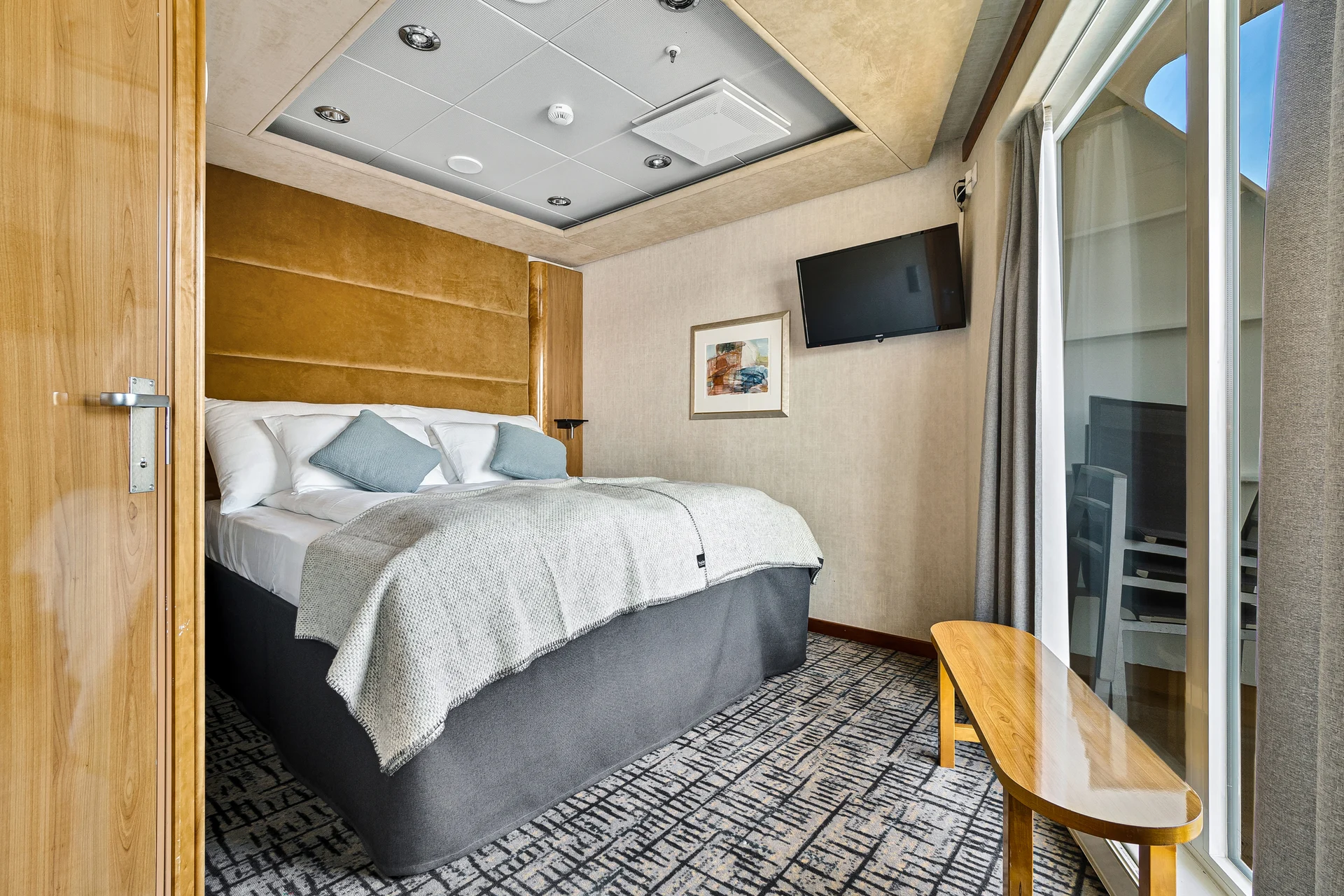
Expedition Suite
Owners' Suite on upper deck with balcony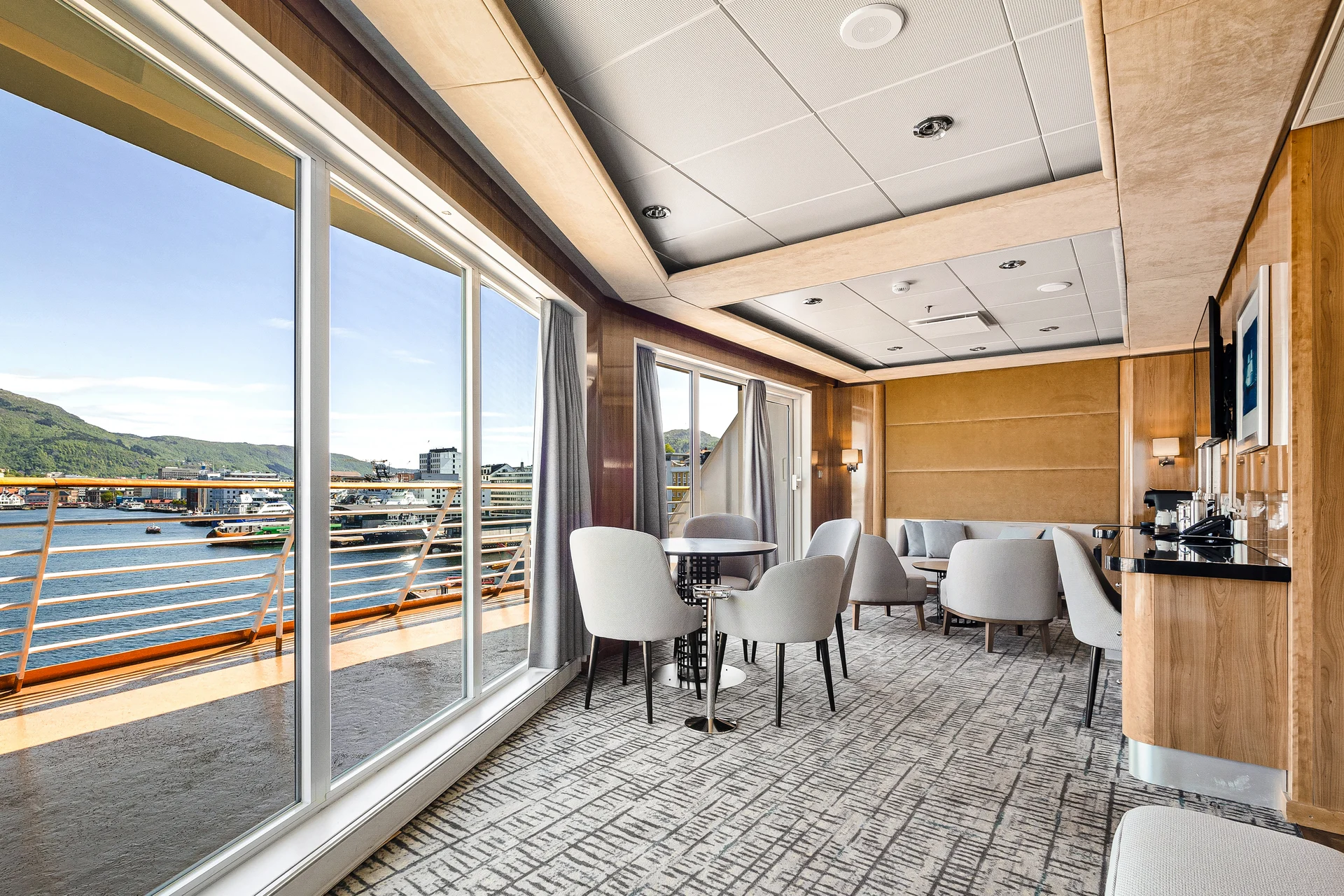
Expedition Suite
Owners' Suite on upper deck with balcony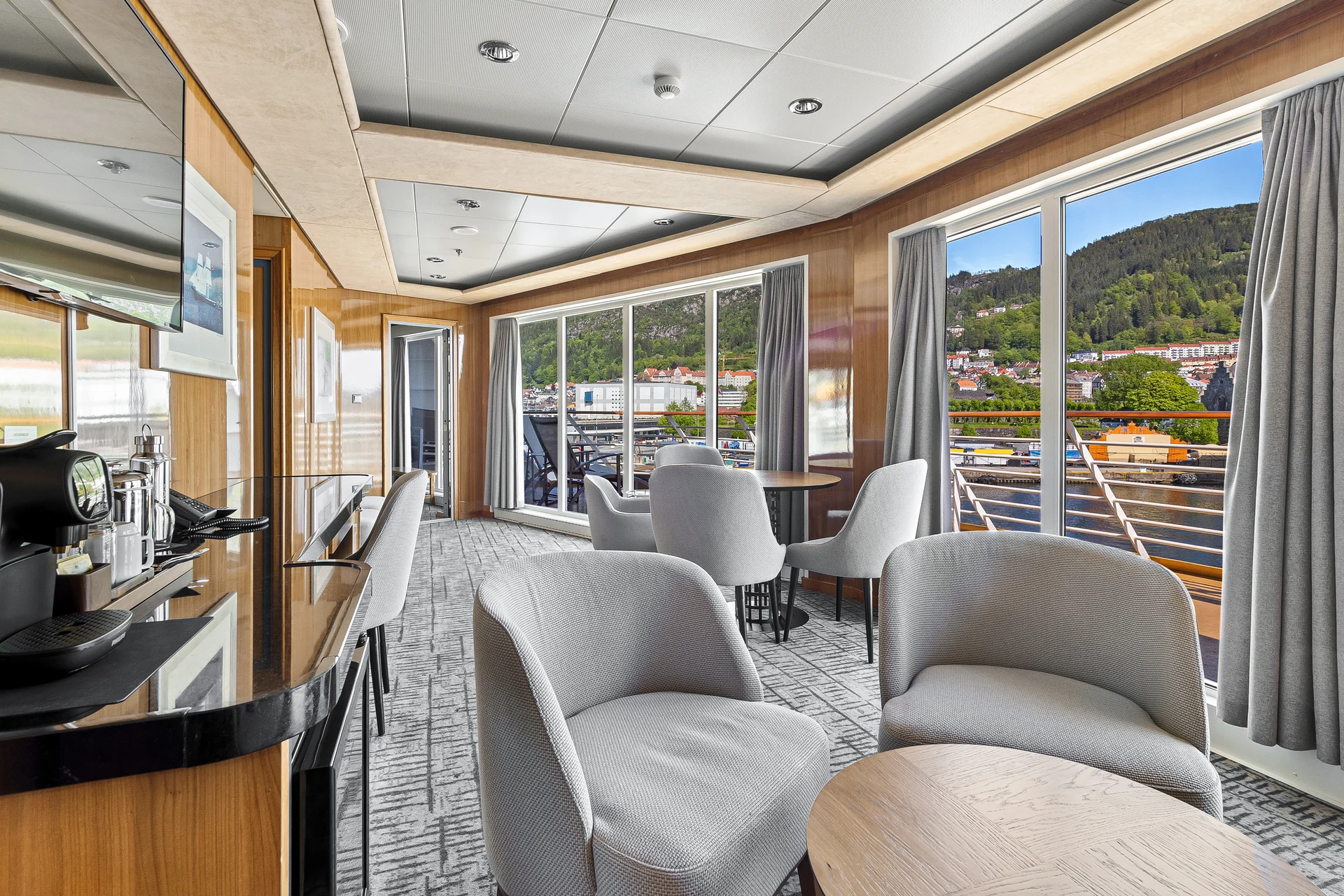
Expedition Suite
Owners' Suite on upper deck with balcony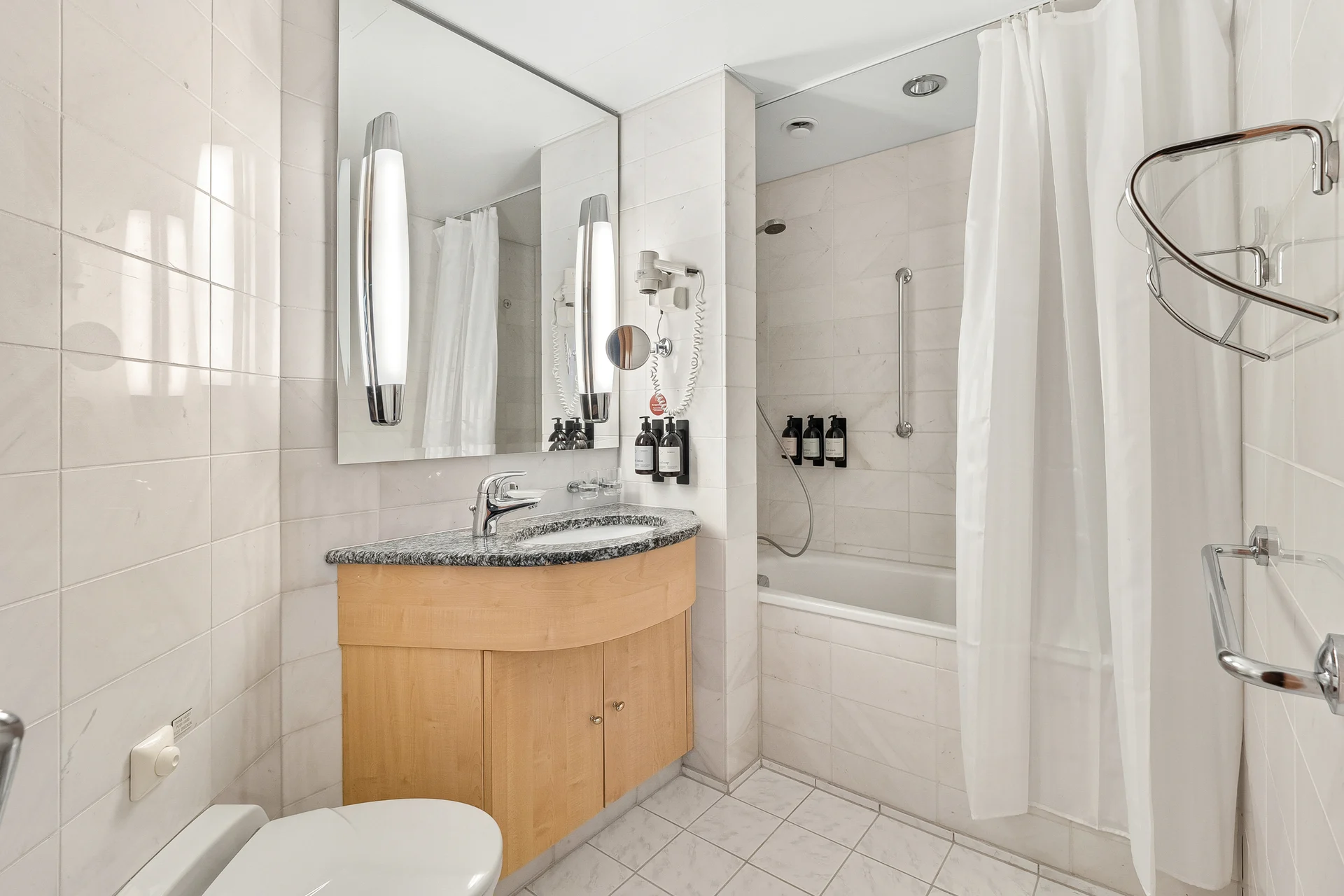
Expedition Suite
Owners' Suite on upper deck with balcony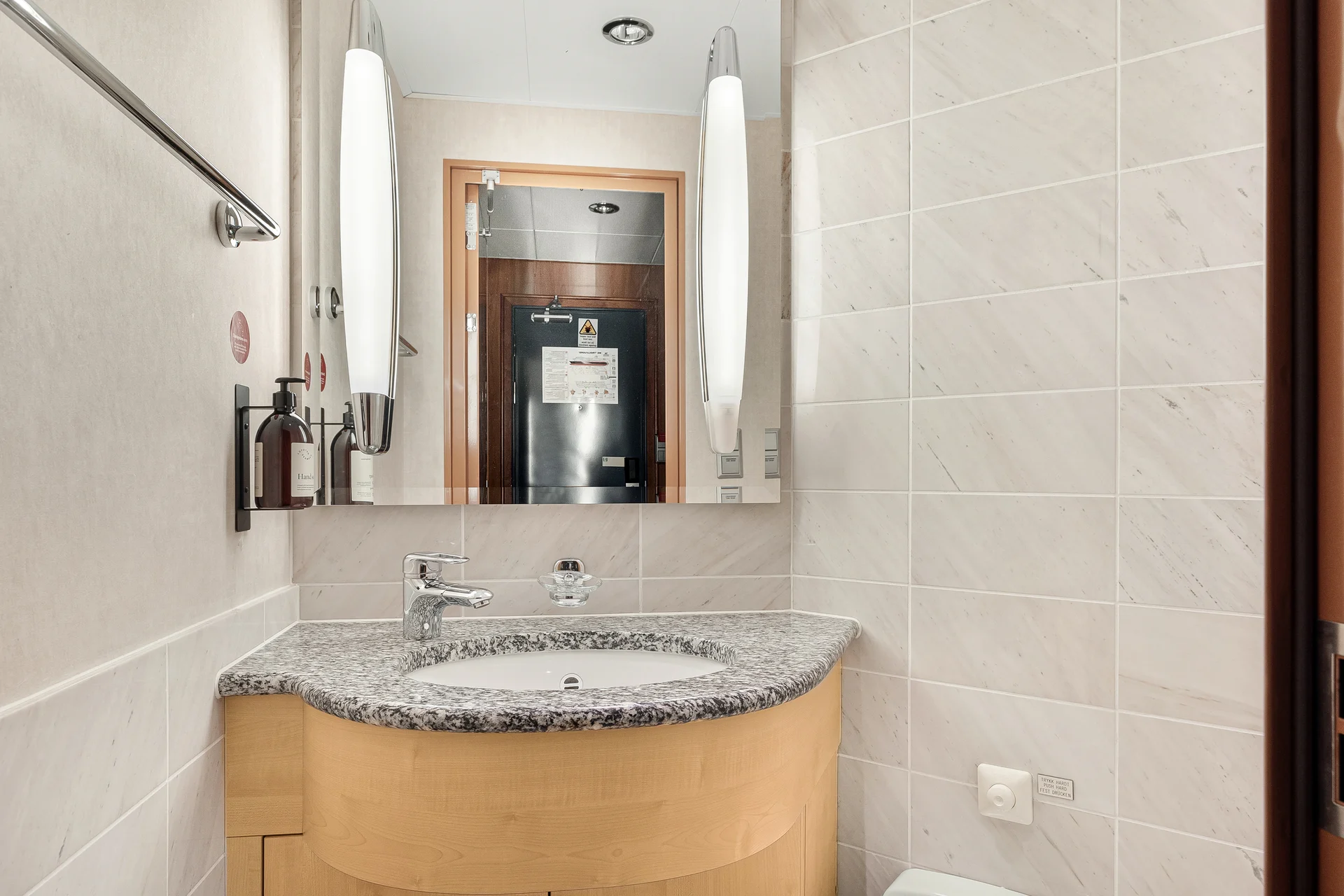
Expedition Suite
Owners' Suite on upper deck with balcony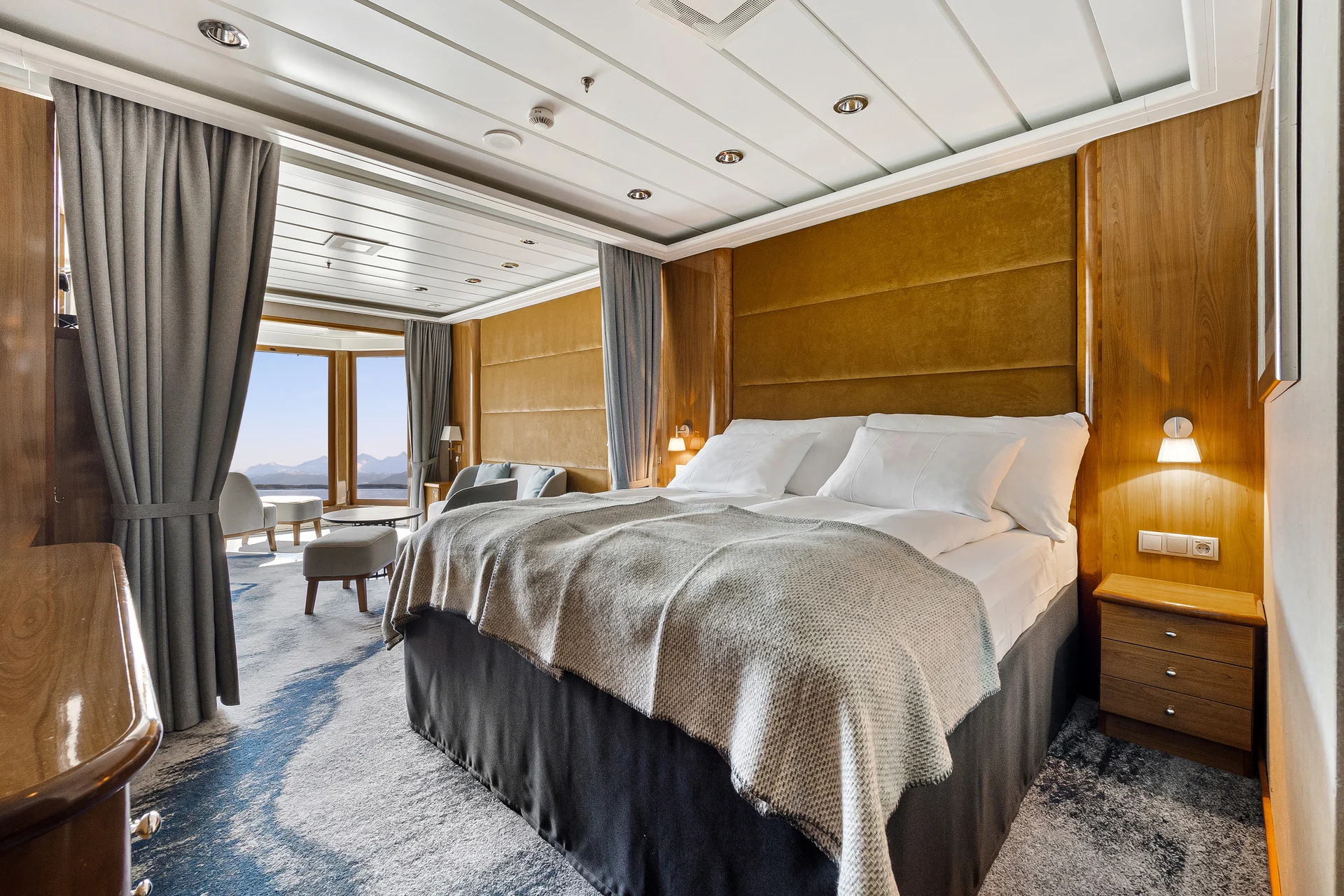
Expedition Suite
Grand Suite on middle or upper deck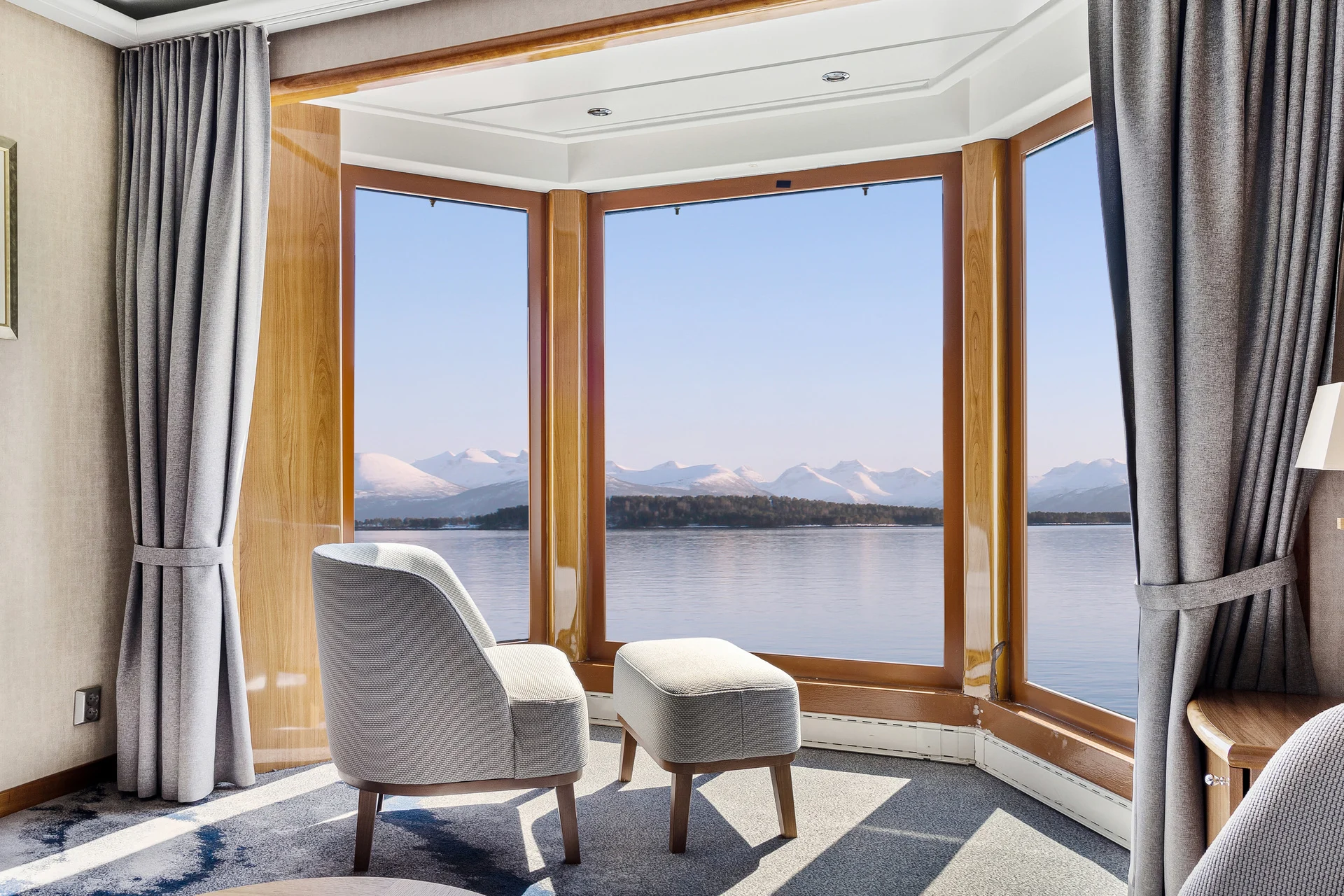
Expedition Suite
Grand Suite on middle or upper deck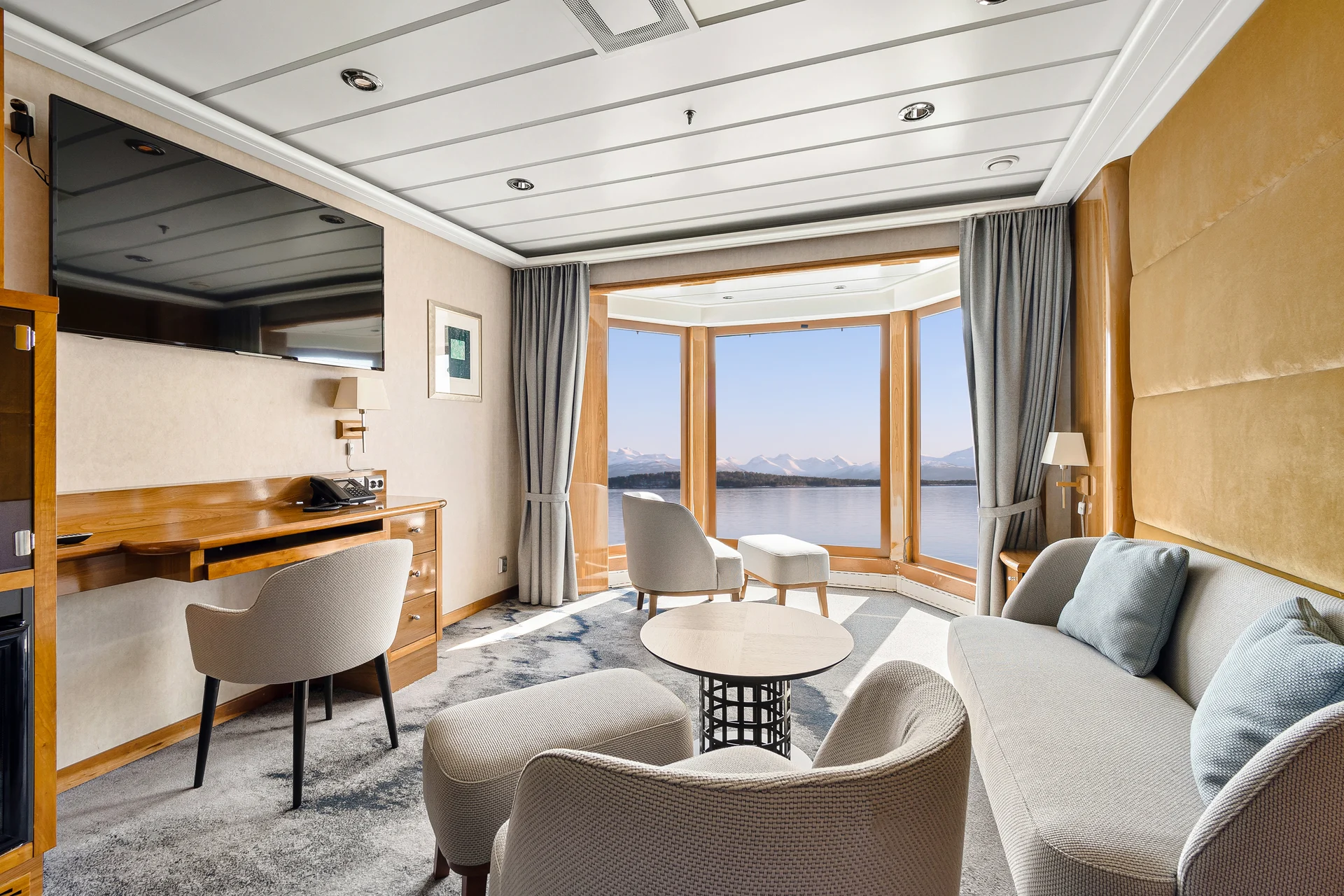
Expedition Suite
Grand Suite on middle or upper deck
Expedition Suite
Grand Suite on middle or upper deck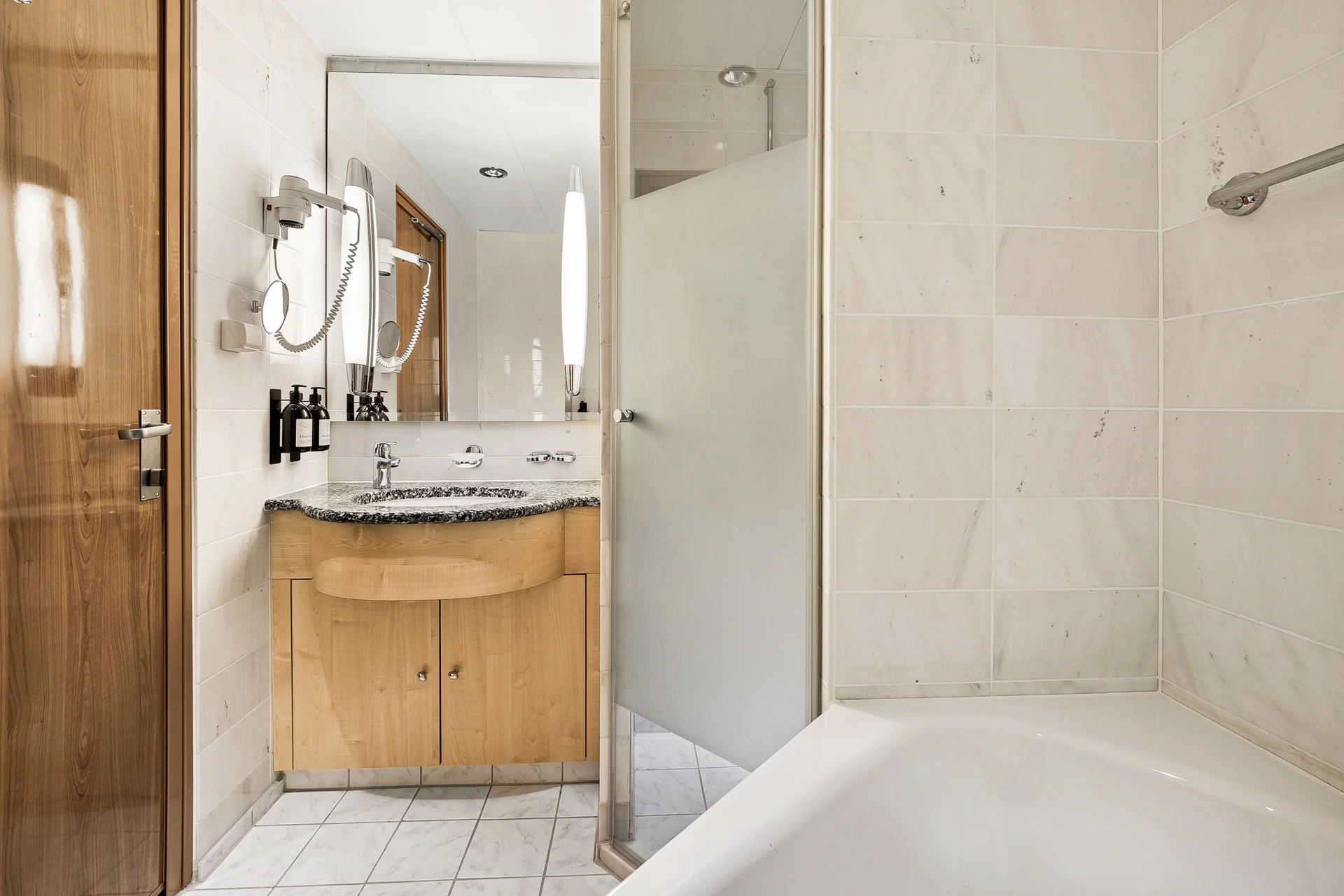
Expedition Suite
Grand Suite on middle or upper deck
Expedition Suite
Grand Suite on middle or upper deck
Expedition Suite
Suite on middle deck with balcony
MS Midnatsol
Previously MS Maud, MS Midnatsol is named after the Midnight Sun, the phenomenon that occurs in northern Norway every summer when the sun doesn’t set for 24 hours.
Facilities
Free Wi-Fi
3 restaurants
Expedition Team
Panoramic lounge
Sauna and fitness room
Laundry room
Meeting rooms
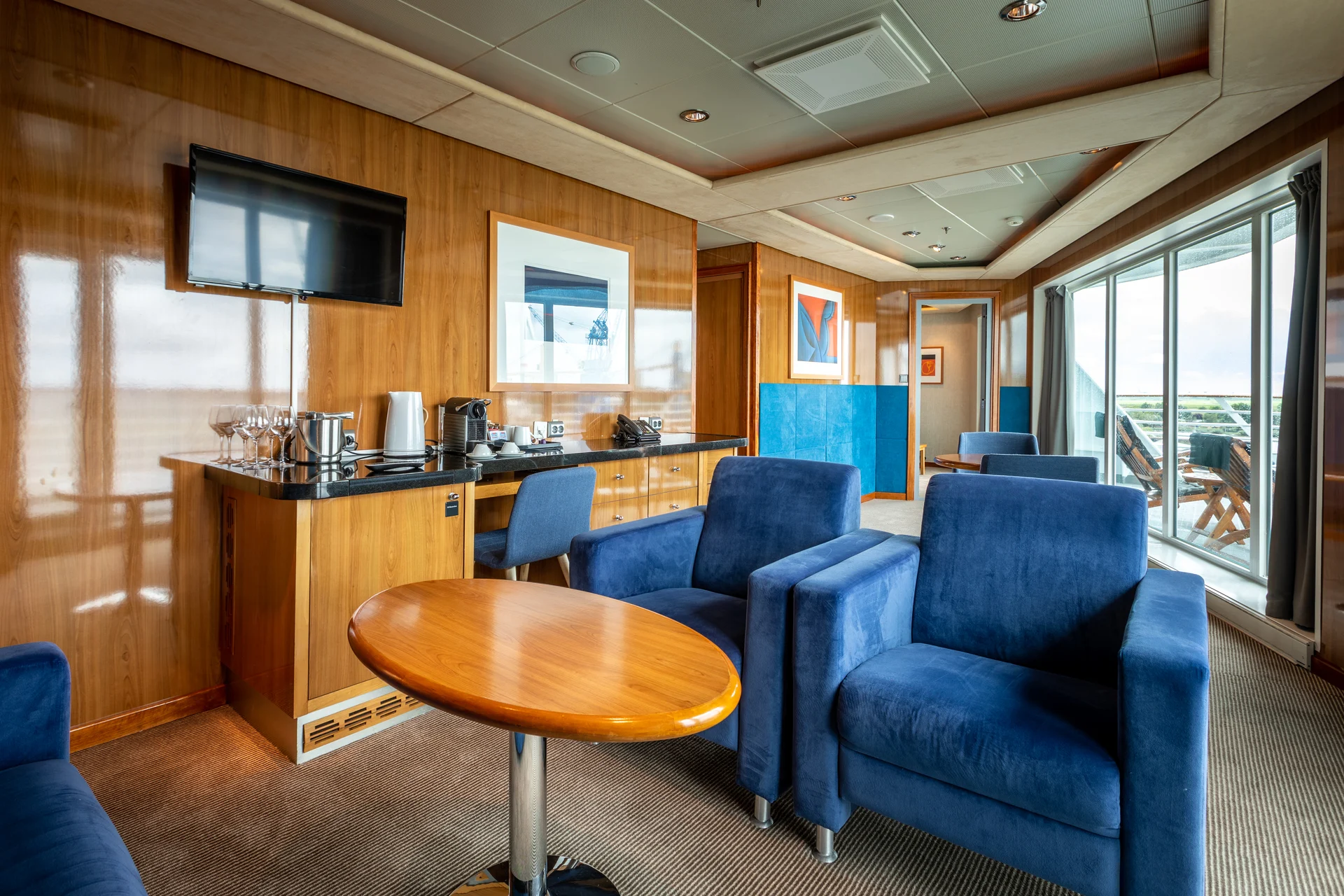
Expedition Suite
Owners' Suite on upper deck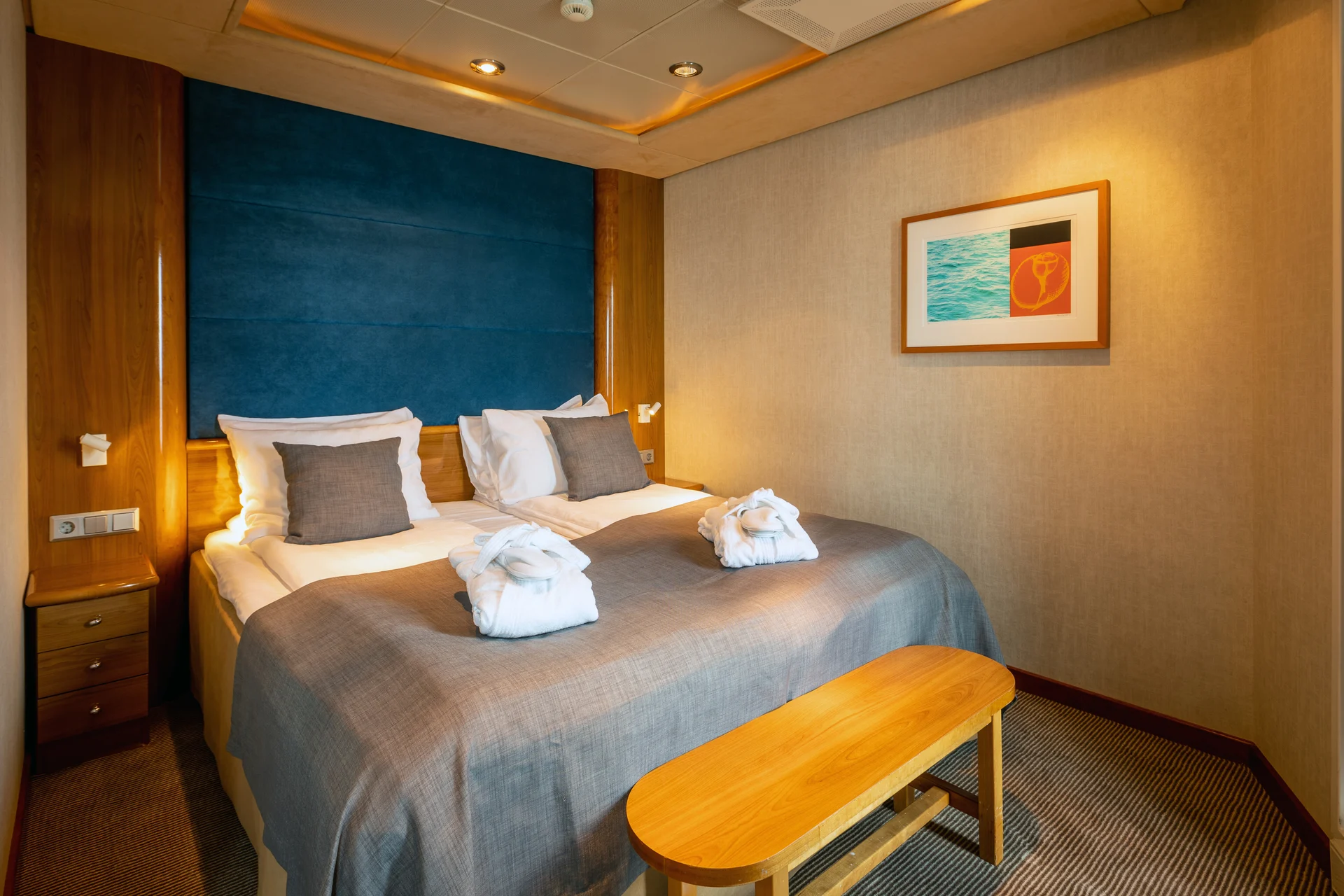
Expedition Suite
Owners' Suite on upper deck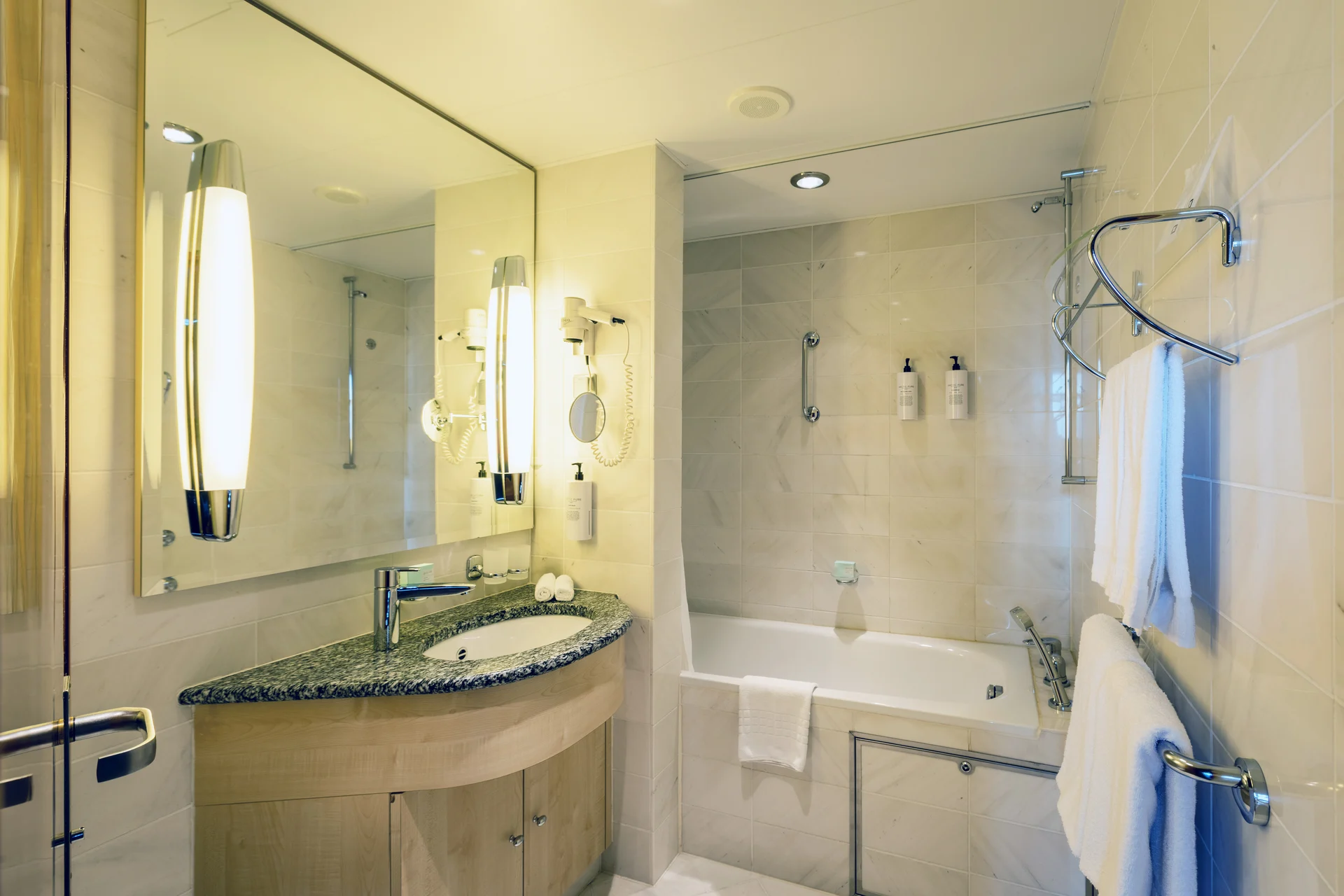
Expedition Suite
Owners' Suite on upper deck
Expedition Suite
Grand Suite on middle or upper deck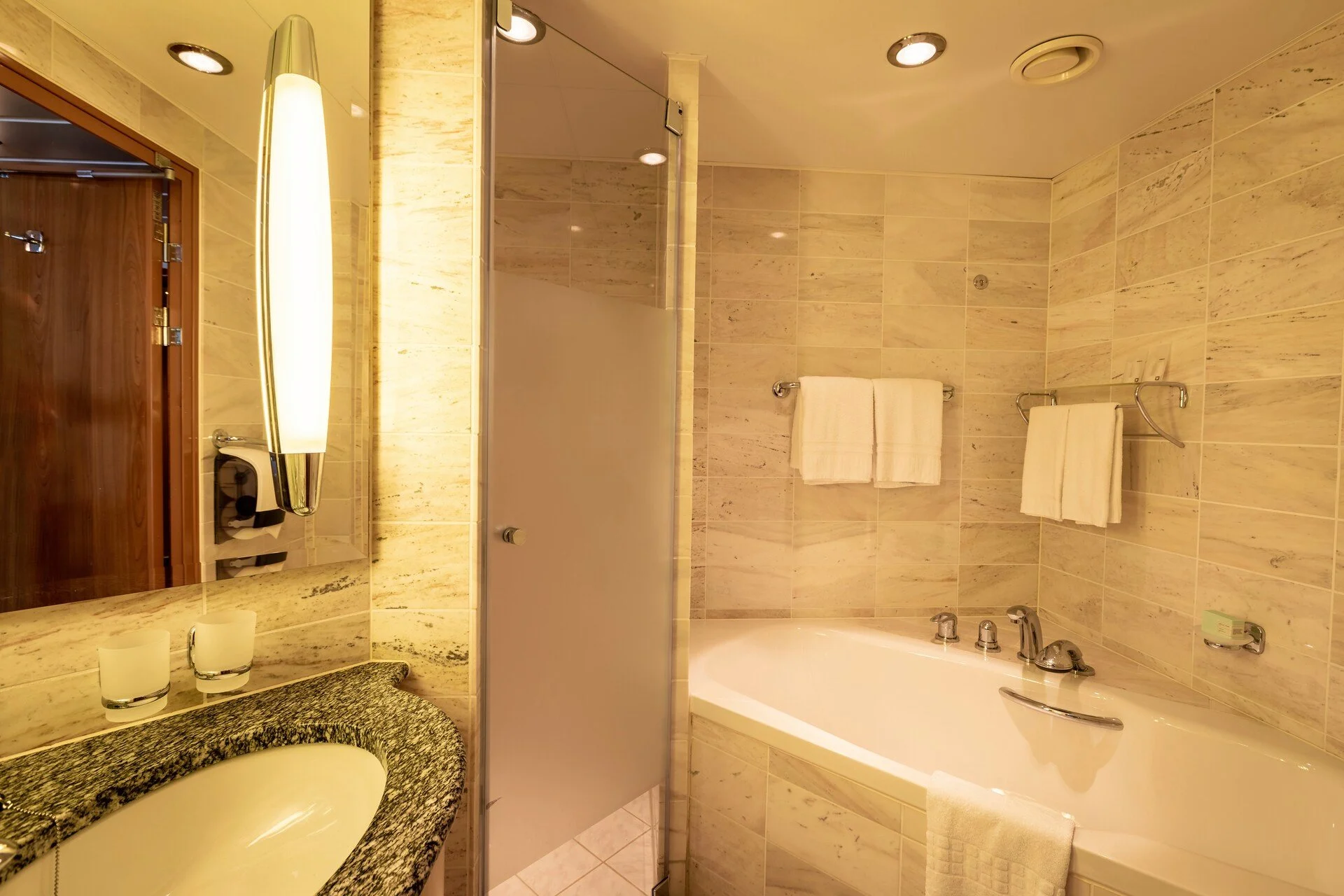
Expedition Suite
Grand Suite on middle or upper deck
Expedition Suite
Suite on middle deck with balcony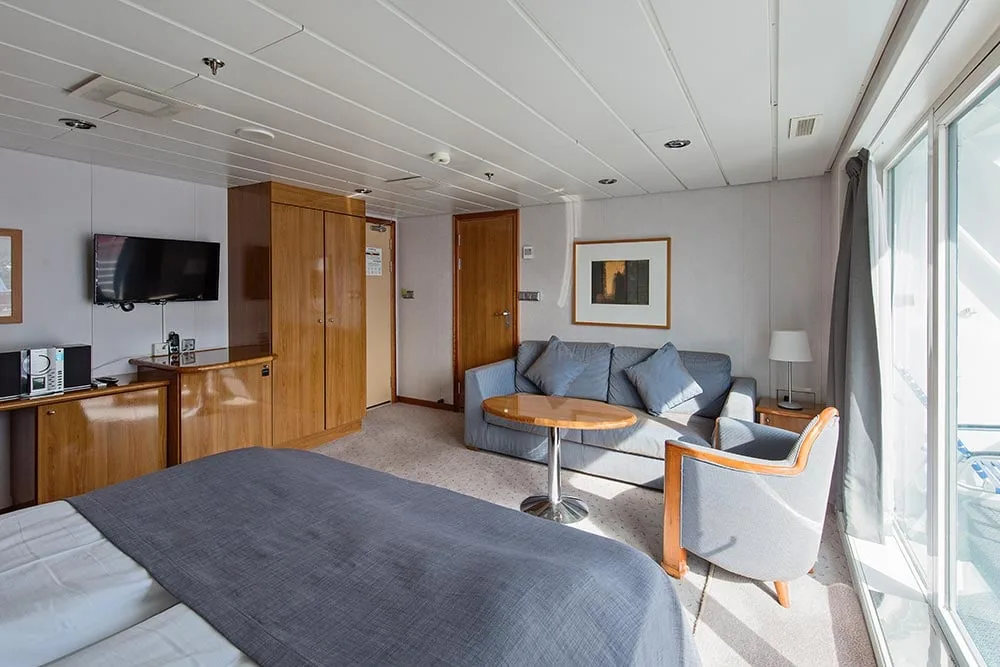
Expedition Suite
Suite on middle deck with balcony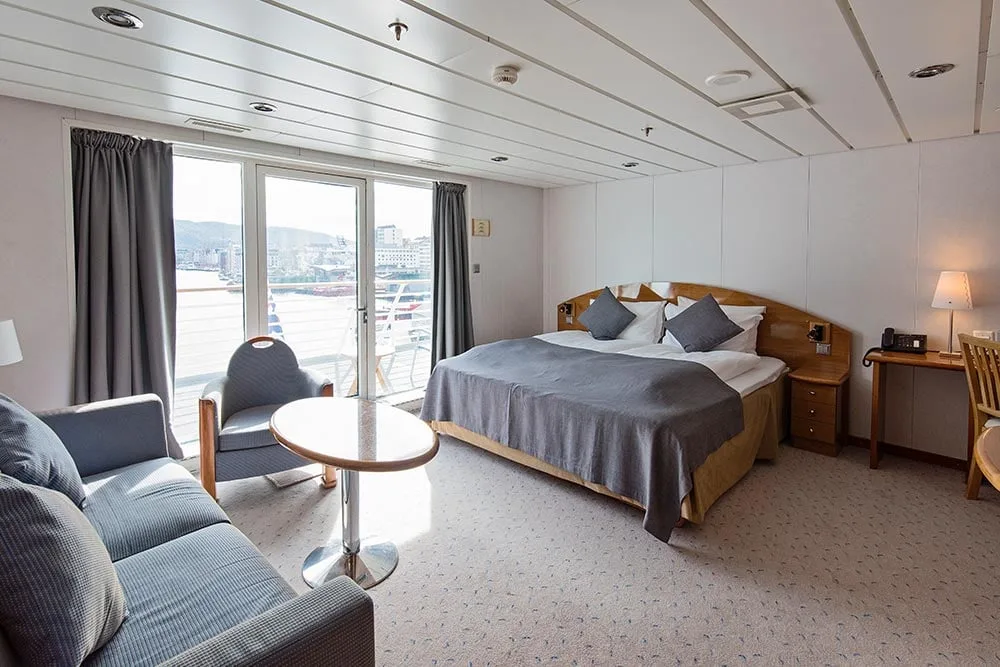
Expedition Suite
Suite on middle deck with balcony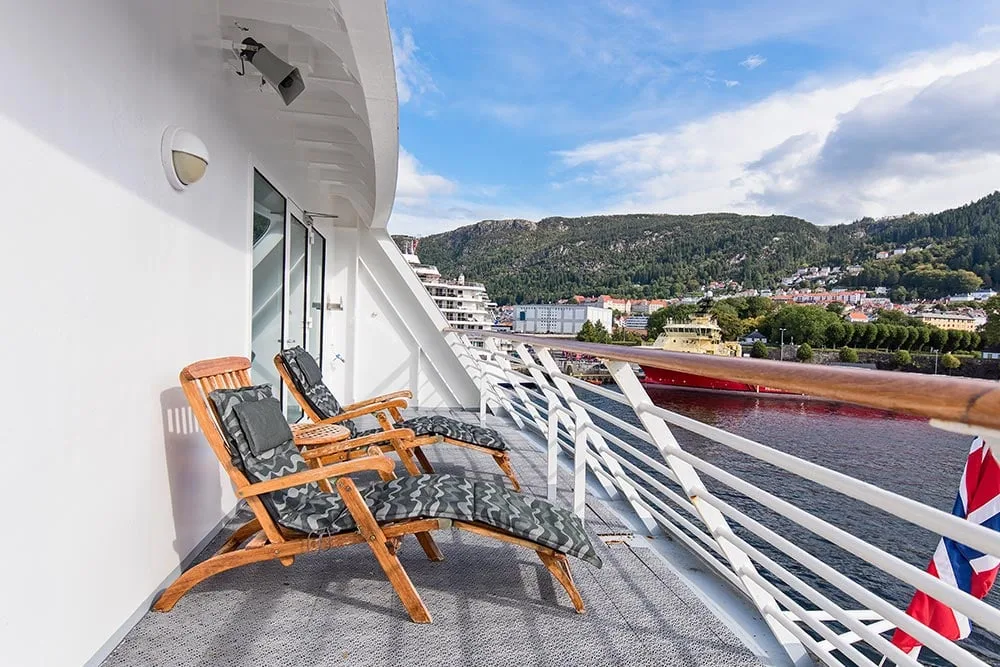
Expedition Suite
Suite on middle deck with balcony
Expedition Suite
Suite on middle deck with balcony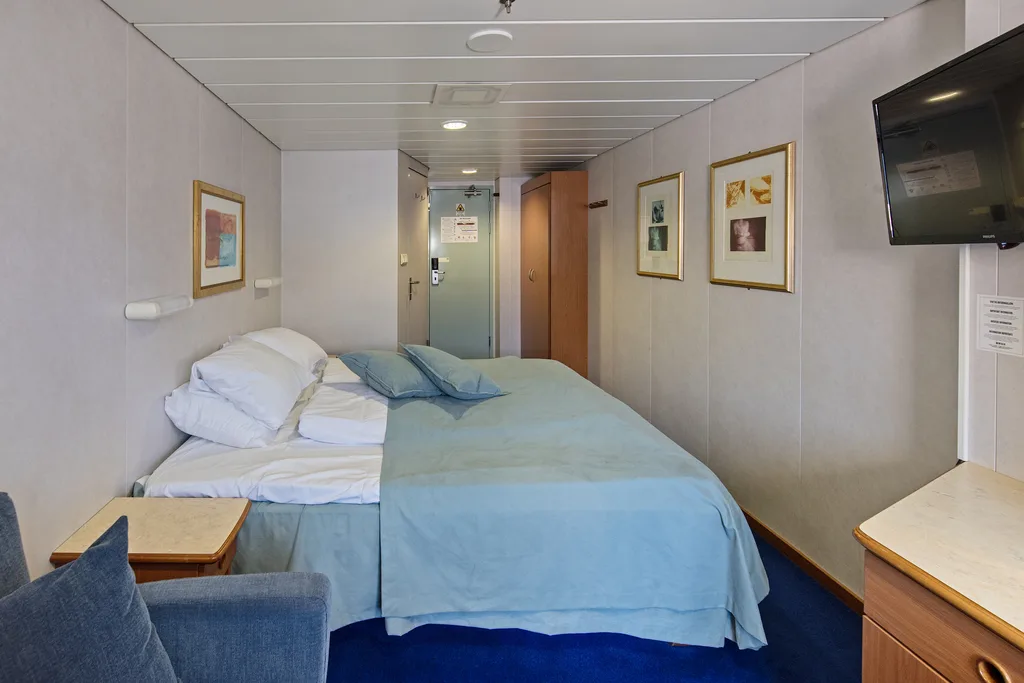
Expedition Suite
Mini Suite on middle deck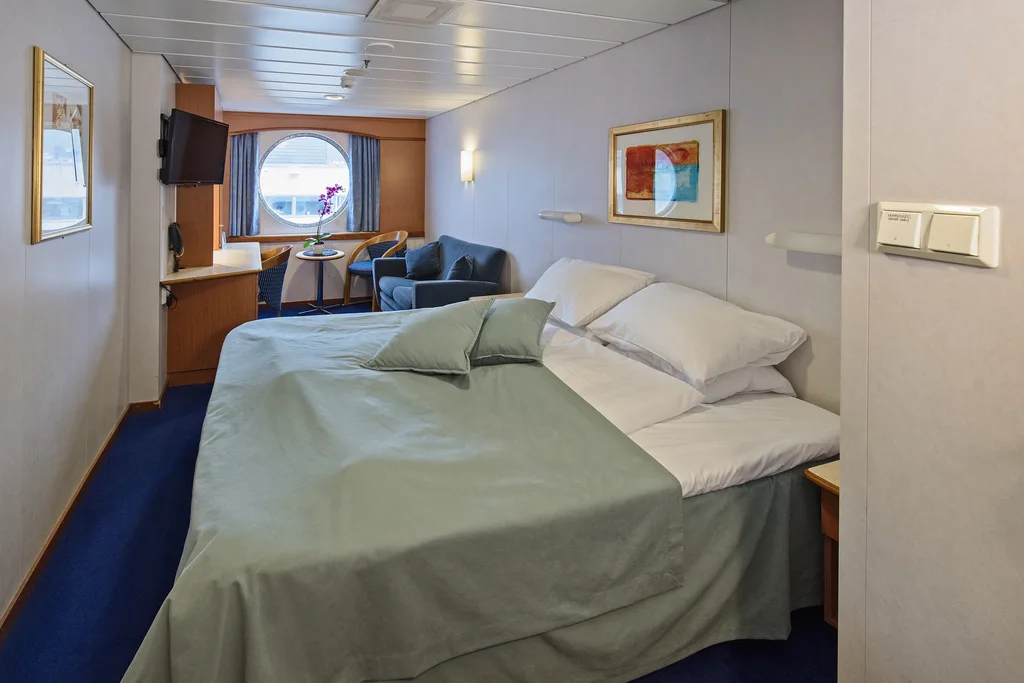
Expedition Suite
Mini Suite on middle deck